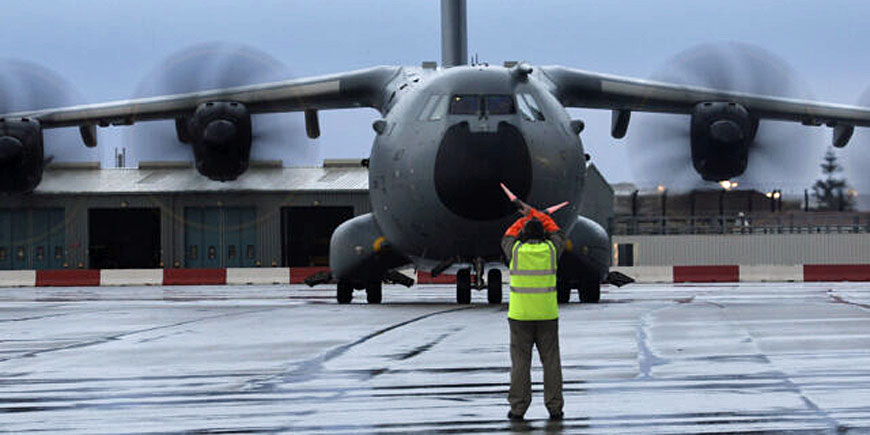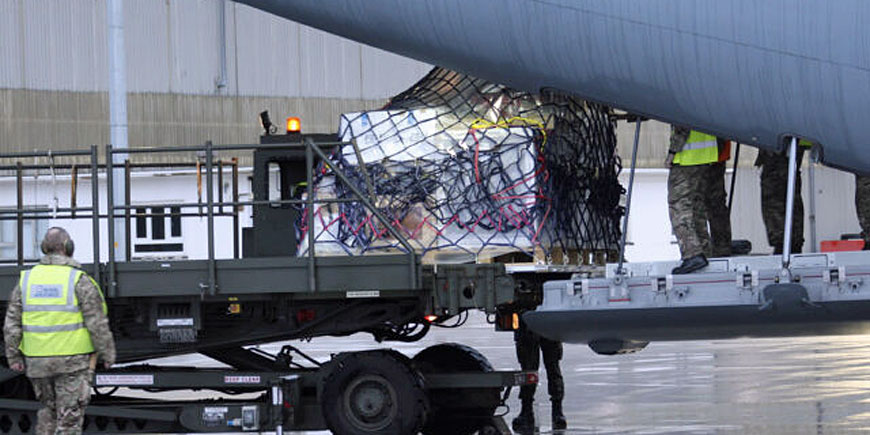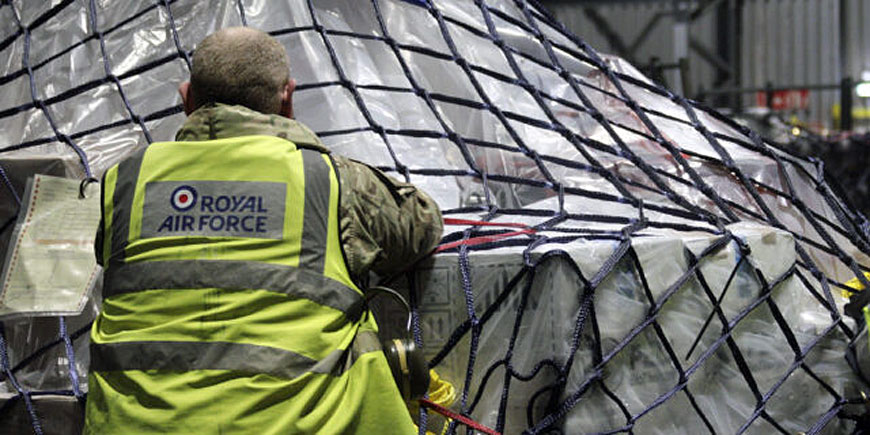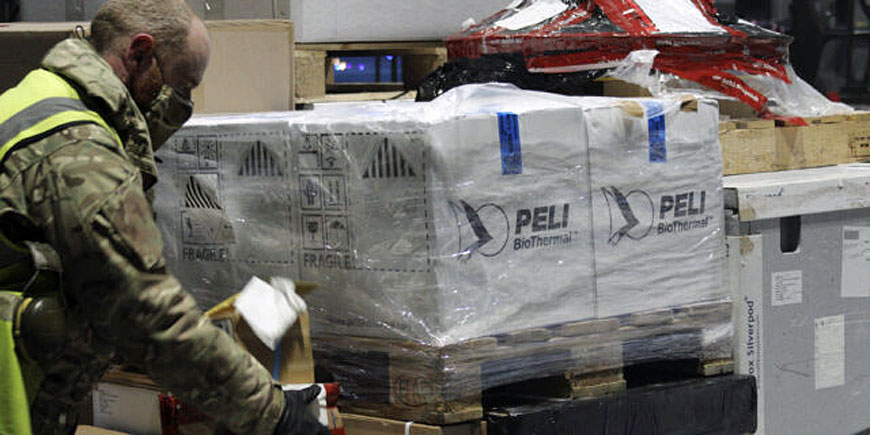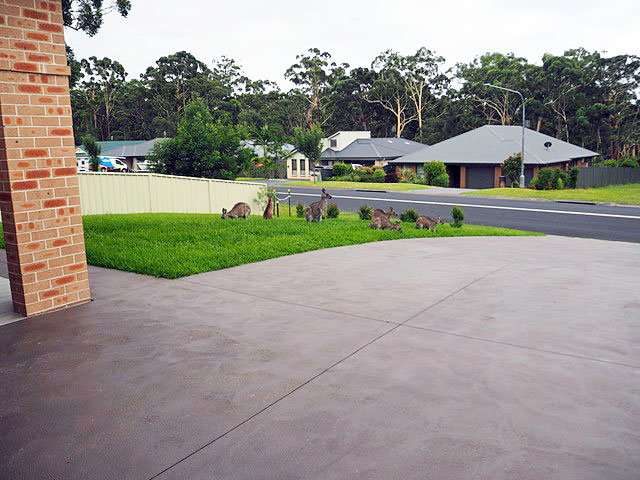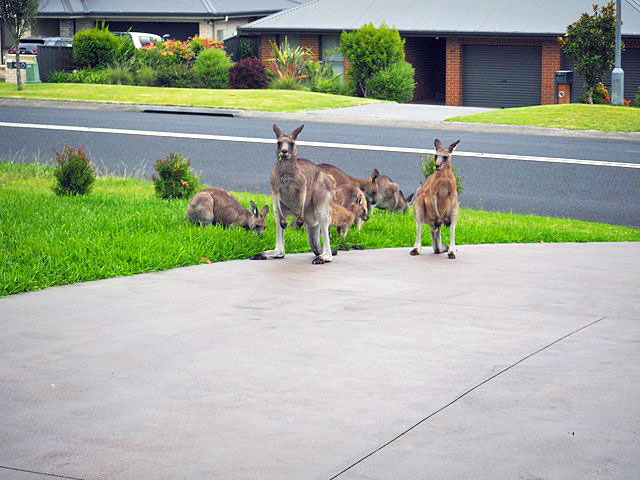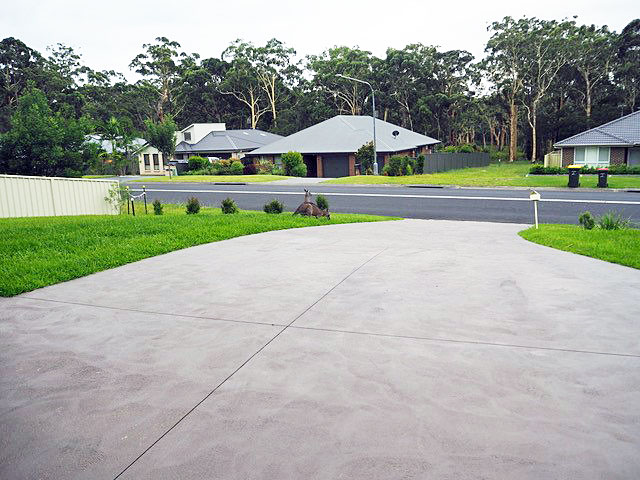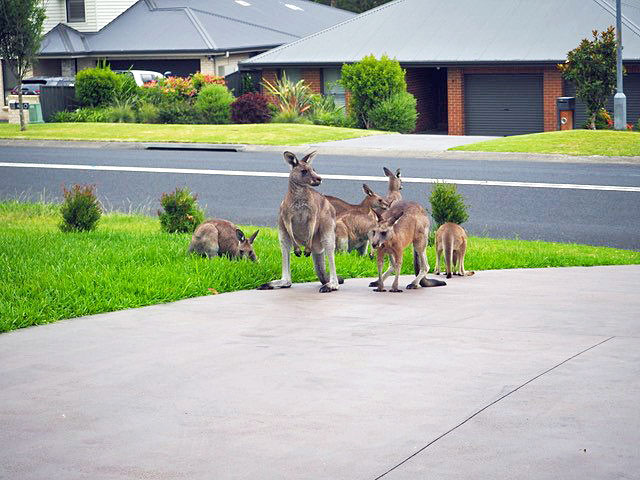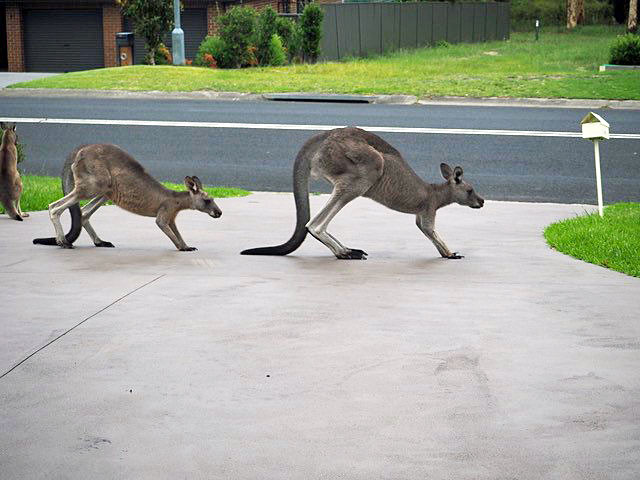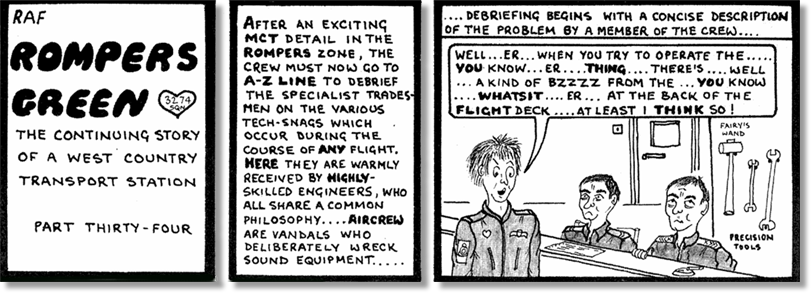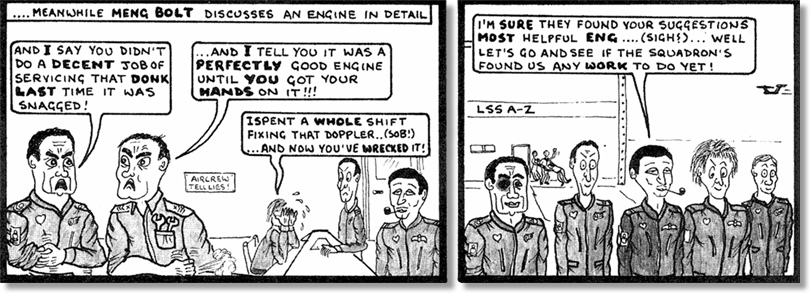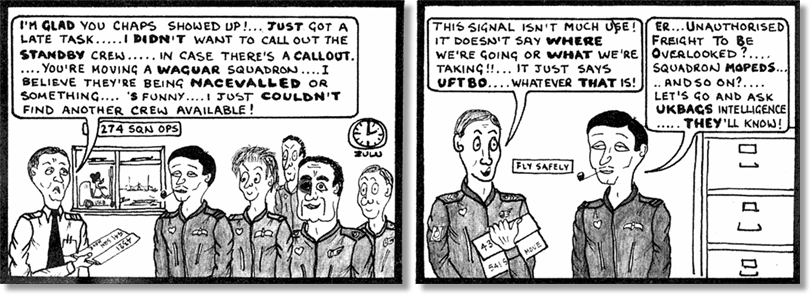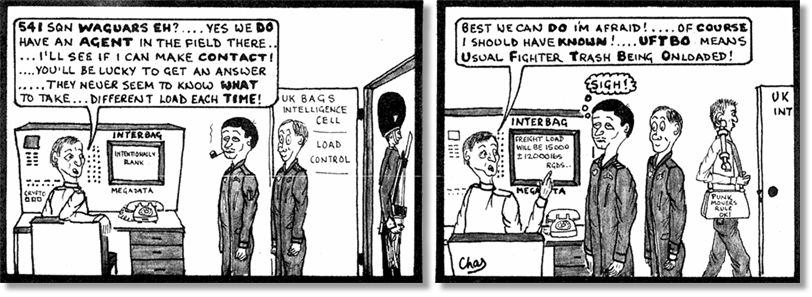


"A Flight to Remember" says Vaccine Pilot
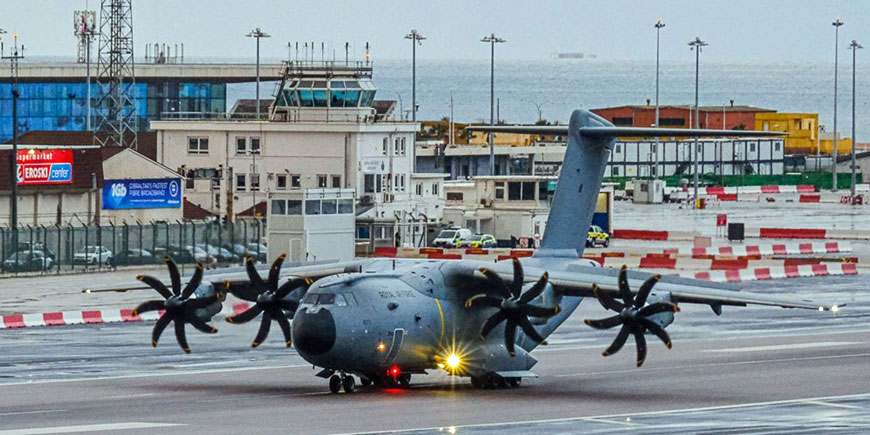
The person with the responsibility and weight of the arrival of Gibraltar’s Covid-19 vaccines on his shoulders was Flight Lieutenant Bagnall. The A400M Atlas military aircraft departed Brize Norton and was tracked by many aviation enthusiasts and others as it made its way to Gibraltar. However, with the squalls of Storm Philomena still lingering in the area concern if the plane could land due to bad weather was foremost on the minds of officials and residents. It was not his first time flying into Gibraltar and had frequently done so on other occasions before continuing to other destinations. But this time is was different.
“The crew were all aware of the how important the cargo onboard was,” he said. “All of our lives have been impacted by Covid-19 so to be able to play a role in enabling Gibraltar to take its next step in its fight against Covid-19 was hugely rewarding.”
With the weather in Gibraltar having sent an A400M Atlas to Faro only days before as it was unable to land, meteorological conditions were going to play a large factor in the vaccines getting here. “The weather at Gibraltar had been particularly poor over the previous day and the day of arrival. There was a large build-up of thunderstorms in the Strait of Gibraltar which made recovery to Gibraltar particularly challenging,” said Flight Lieutenant Bagnall. “As always, the safe operation of the aircraft is of paramount importance and you cannot allow the importance of any cargo influence your judgement.” “By taking extra fuel we gave ourselves plenty of options , primarily to wait for any thunderstorms to pass through, allowing us to execute a safe arrival into Gibraltar.”
The vaccines onboard are not only of particular importance they are also fragile. Flight Lieutenant Bagnall explains how they took this into account. “By studying the weather for the day we can pick the optimum route and Flight levels to fly at to keep the flight as smooth as possible. Combined with the meticulous preparation and loading of the vaccines by our RAF Air Movements staff ensured the vaccines arrived in pristine condition.”
Relief and joy was experienced by many in Gibraltar as the A400M Atlas touched down on Runway 27 at 5.55pm on Saturday. But, for the pilots and those onboard the A400M Atlas it was a different emotion. “It was a huge sense of achievement. To play a role in Gibraltar's fight against Covid-19 is something I’ll remember for years to come,” said Flight Lieutenant Bagnall. “It was also amazing to see how well planned the execution of unloading and distributing the vaccines was. In a matter of hours after landing I read a news article showing the first vaccine being administered.”
He is not sure if he will be returning to the Rock with the next batch of vaccines, due later this month. “I do know that they will be in safe hands with members of the UK Armed Forces doing their utmost to deliver them safely for the people of Gibraltar,” he said.
Gibraltar Chronicle
“The crew were all aware of the how important the cargo onboard was,” he said. “All of our lives have been impacted by Covid-19 so to be able to play a role in enabling Gibraltar to take its next step in its fight against Covid-19 was hugely rewarding.”
With the weather in Gibraltar having sent an A400M Atlas to Faro only days before as it was unable to land, meteorological conditions were going to play a large factor in the vaccines getting here. “The weather at Gibraltar had been particularly poor over the previous day and the day of arrival. There was a large build-up of thunderstorms in the Strait of Gibraltar which made recovery to Gibraltar particularly challenging,” said Flight Lieutenant Bagnall. “As always, the safe operation of the aircraft is of paramount importance and you cannot allow the importance of any cargo influence your judgement.” “By taking extra fuel we gave ourselves plenty of options , primarily to wait for any thunderstorms to pass through, allowing us to execute a safe arrival into Gibraltar.”
The vaccines onboard are not only of particular importance they are also fragile. Flight Lieutenant Bagnall explains how they took this into account. “By studying the weather for the day we can pick the optimum route and Flight levels to fly at to keep the flight as smooth as possible. Combined with the meticulous preparation and loading of the vaccines by our RAF Air Movements staff ensured the vaccines arrived in pristine condition.”
Relief and joy was experienced by many in Gibraltar as the A400M Atlas touched down on Runway 27 at 5.55pm on Saturday. But, for the pilots and those onboard the A400M Atlas it was a different emotion. “It was a huge sense of achievement. To play a role in Gibraltar's fight against Covid-19 is something I’ll remember for years to come,” said Flight Lieutenant Bagnall. “It was also amazing to see how well planned the execution of unloading and distributing the vaccines was. In a matter of hours after landing I read a news article showing the first vaccine being administered.”
He is not sure if he will be returning to the Rock with the next batch of vaccines, due later this month. “I do know that they will be in safe hands with members of the UK Armed Forces doing their utmost to deliver them safely for the people of Gibraltar,” he said.
Gibraltar Chronicle

From: David Powell, Princes Risborough, Bucks
Subject: JABS R US
Subject: JABS R US
JABS R US
Hi Tony,
Don’t know what the hot headlines are in Canada at present but here in England-land it’s all COVID19 and, in particular the challenge of mass vaccination and rounding up thousands of volunteer syringe handlers.
This call to arms triggered a long dormant corner of the old underused memory banks and tale you might find interesting. This was a very very long time ago. Also, I should warn you that the story contains adult content so might require a PG or even R rating.
As a sprog very junior junior officer, I had been lent by my supply outfit at RAF REDACTED (who were always quite keen to loose me for the odd month or so – can’t think why?) to a forward tented temporary base at RAF SERIOUSLY REDACTED. I was to be there for two or three weeks to take over from the detachment stores and movements officer and hold the fort until his relief arrived from UK or Germany or somewhere.
My 4 star tented, bring your own safari bed, billet was shared with the detachment medical officer. He was about half way through his 3-month deployment. After a few days the doc let me know that he had blagged a weekend’s leave at REDACTED, which even in those far off days was quite a popular tourist destination, especially for young American REDACTED getting seriously shot at on ops at REDACTED.
Anyway my camping colleague was anticipating taking full advantage of the tourist amenities likely to be available at his weekend destination. However, as a medical specialist he was well aware of certain risks that could be encountered. Obviously a boy scout in his relatively recent youth he had prescribed himself some suitable medication.
However, in administering said medication my assistance would be greatly appreciated in exchange for a couple of cans of REDACTED beer. On learning of my proposed role and seeing my initial reaction, this was increased to six cans and the deal struck. Plus, although a typical multi-faceted supply and movements officer, I expected and would be given some basic medical training in the proposed task. This was basically practicing on the 8 o’clock of a dart board without letting go. Namely, armed with a very large syringe the doc would appreciate me giving him a healthy shot of pre-recreational activity preventative penicillin in his backside before he departed for his weekend in paradise!
Needless to say I did enjoy my 6-pack of beer.
The problem I now face is wondering if, although not officially certified, would this previous practical experience in vaccination, albeit on a much larger target area than just an upper arm (according to the many photos in today’s papers) be acceptable if I were to volunteer to be COVID19 vaccinator?
Stay Safe and Best Wishes
David Powell
F Team UKMAMS RAF Abingdon 1967-69
Don’t know what the hot headlines are in Canada at present but here in England-land it’s all COVID19 and, in particular the challenge of mass vaccination and rounding up thousands of volunteer syringe handlers.
This call to arms triggered a long dormant corner of the old underused memory banks and tale you might find interesting. This was a very very long time ago. Also, I should warn you that the story contains adult content so might require a PG or even R rating.
As a sprog very junior junior officer, I had been lent by my supply outfit at RAF REDACTED (who were always quite keen to loose me for the odd month or so – can’t think why?) to a forward tented temporary base at RAF SERIOUSLY REDACTED. I was to be there for two or three weeks to take over from the detachment stores and movements officer and hold the fort until his relief arrived from UK or Germany or somewhere.
My 4 star tented, bring your own safari bed, billet was shared with the detachment medical officer. He was about half way through his 3-month deployment. After a few days the doc let me know that he had blagged a weekend’s leave at REDACTED, which even in those far off days was quite a popular tourist destination, especially for young American REDACTED getting seriously shot at on ops at REDACTED.
Anyway my camping colleague was anticipating taking full advantage of the tourist amenities likely to be available at his weekend destination. However, as a medical specialist he was well aware of certain risks that could be encountered. Obviously a boy scout in his relatively recent youth he had prescribed himself some suitable medication.
However, in administering said medication my assistance would be greatly appreciated in exchange for a couple of cans of REDACTED beer. On learning of my proposed role and seeing my initial reaction, this was increased to six cans and the deal struck. Plus, although a typical multi-faceted supply and movements officer, I expected and would be given some basic medical training in the proposed task. This was basically practicing on the 8 o’clock of a dart board without letting go. Namely, armed with a very large syringe the doc would appreciate me giving him a healthy shot of pre-recreational activity preventative penicillin in his backside before he departed for his weekend in paradise!
Needless to say I did enjoy my 6-pack of beer.
The problem I now face is wondering if, although not officially certified, would this previous practical experience in vaccination, albeit on a much larger target area than just an upper arm (according to the many photos in today’s papers) be acceptable if I were to volunteer to be COVID19 vaccinator?
Stay Safe and Best Wishes
David Powell
F Team UKMAMS RAF Abingdon 1967-69

Royal Air Force Disbands Historical D-Day Group
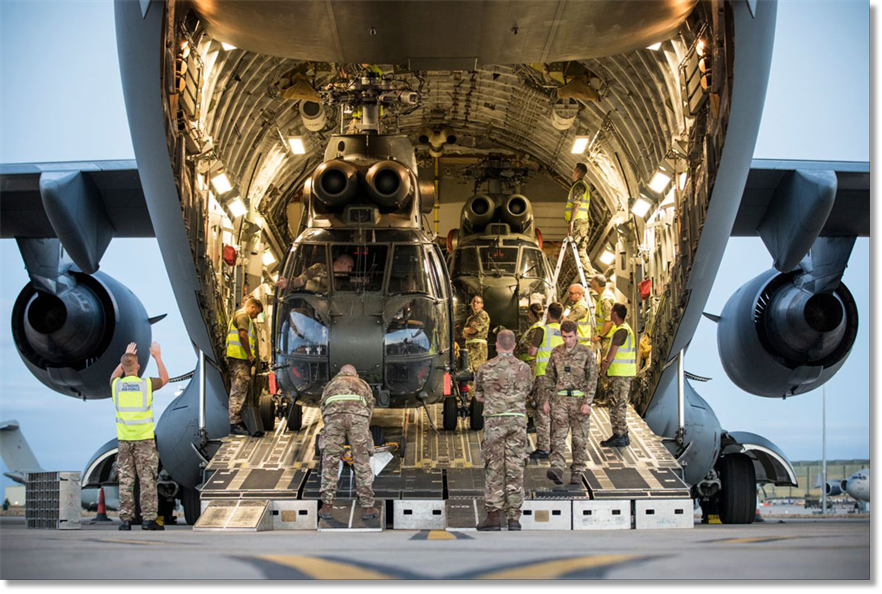
On 31st December 2020, the Royal Air Force marked the end of yet another chapter in the rich and diverse history of Number 38 Group with its disbandment.
No. 38 Group has played a significant role in global operations from its origins in the 1940s to the 21st Century. Originally formed mid-way through the Second World War as part of Fighter Command, the Group’s motto is ‘Par Nobile Fratrum’, or ‘A Noble Pair of Brothers’, reflecting the interoperability between the newly formed Group and Airborne forces that endured throughout its early years.
Air Chief Marshal Sir Mike Wigston, Chief of the Air Staff, said, "Number 38 Group has contributed immeasurably to operations in the UK and worldwide since its reformation six years ago. Its disbandment marks a new chapter in the way we enable future air and space operations. The newly-formed RAF Support Force in No. 2 Group will have the structure, connectivity and resources we need to sustain our battle-winning next generation Royal Air Force.”
The Group has played a significant role in global operations from its origins in the 1940s to the 21st Century. Over its history it has commanded rotary, fast-jet and transport aircraft including the Stirling, Halifax, Hawker Hunter, Javelin, Harrier, Hercules, Jaguar, VC-10, Chinook and Puma.
Its numerous operations include supporting the Special Operations Executive in the Second World War on Operation OVERLORD with the airdrop of some 24,000 troops and equipment into German occupied Western Europe. In 1948 the Group was heavily involved in the Berlin Airlift where its Blackburn Beverley and Handley Page aircraft contributed to the allied Air Forces landing or taking-off every 30 seconds, culminating in over 2.3 million tons of cargo delivered by 300,000 individual sorties.
In 1967, using aircraft such as the lesser known Scottish Aviation Pioneer, the Group was used for casualty evacuation in the Malayan Emergency, Aden and Cyprus. Following the Cold-War years, the Group played a major part in Operation DENY FLIGHT, the NATO operation to restrict airspace movements over Bosnia in 1993.
Reformation in 2014 saw the Group bring together the RAF’s Engineering, Logistics, Communications and Medical Operations units. During the last six years the specialisations within the Group have supported a range of aircraft and delivered air power on operations around the world. Most recently they have supported a number of UK based activities including the government’s response to COVID-19.
The Wings, Squadrons and individuals that make up 38 Group will now come under the command of other RAF Groups and business areas including the recently formed integrated Support Force.
Air Vice-Marshal Simon Ellard, Air Officer Commanding 38 Group, said, “The creation of the Support Force, bringing together the engineering, logistics, communications, cyber and medical Support Force Elements together for the first time under single 1-star leadership, will enhance the Next Generation Air Force’s ability to operate in an increasingly expeditionary manner. This re-organisation leads to the sad retirement of 38 Group, but everyone associated with this distinguished organisation can take pride in the most recent noble chapter of the Group’s history.”
raf.mod.uk
No. 38 Group has played a significant role in global operations from its origins in the 1940s to the 21st Century. Originally formed mid-way through the Second World War as part of Fighter Command, the Group’s motto is ‘Par Nobile Fratrum’, or ‘A Noble Pair of Brothers’, reflecting the interoperability between the newly formed Group and Airborne forces that endured throughout its early years.
Air Chief Marshal Sir Mike Wigston, Chief of the Air Staff, said, "Number 38 Group has contributed immeasurably to operations in the UK and worldwide since its reformation six years ago. Its disbandment marks a new chapter in the way we enable future air and space operations. The newly-formed RAF Support Force in No. 2 Group will have the structure, connectivity and resources we need to sustain our battle-winning next generation Royal Air Force.”
The Group has played a significant role in global operations from its origins in the 1940s to the 21st Century. Over its history it has commanded rotary, fast-jet and transport aircraft including the Stirling, Halifax, Hawker Hunter, Javelin, Harrier, Hercules, Jaguar, VC-10, Chinook and Puma.
Its numerous operations include supporting the Special Operations Executive in the Second World War on Operation OVERLORD with the airdrop of some 24,000 troops and equipment into German occupied Western Europe. In 1948 the Group was heavily involved in the Berlin Airlift where its Blackburn Beverley and Handley Page aircraft contributed to the allied Air Forces landing or taking-off every 30 seconds, culminating in over 2.3 million tons of cargo delivered by 300,000 individual sorties.
In 1967, using aircraft such as the lesser known Scottish Aviation Pioneer, the Group was used for casualty evacuation in the Malayan Emergency, Aden and Cyprus. Following the Cold-War years, the Group played a major part in Operation DENY FLIGHT, the NATO operation to restrict airspace movements over Bosnia in 1993.
Reformation in 2014 saw the Group bring together the RAF’s Engineering, Logistics, Communications and Medical Operations units. During the last six years the specialisations within the Group have supported a range of aircraft and delivered air power on operations around the world. Most recently they have supported a number of UK based activities including the government’s response to COVID-19.
The Wings, Squadrons and individuals that make up 38 Group will now come under the command of other RAF Groups and business areas including the recently formed integrated Support Force.
Air Vice-Marshal Simon Ellard, Air Officer Commanding 38 Group, said, “The creation of the Support Force, bringing together the engineering, logistics, communications, cyber and medical Support Force Elements together for the first time under single 1-star leadership, will enhance the Next Generation Air Force’s ability to operate in an increasingly expeditionary manner. This re-organisation leads to the sad retirement of 38 Group, but everyone associated with this distinguished organisation can take pride in the most recent noble chapter of the Group’s history.”
raf.mod.uk

From: John Guy, Northampton
Subject: Pandemic Stories
Hi Tony,
Like you, Gisela and I are vulnerable, therefore we have been confined to base. Normally I would do the shopping, but in this respect we have been well looked after by friends. In respect of computer usage I am still a novice, but a friend has recently encouraged me to have a go at online shopping. Thus I had a go and ordered 11 items of groceries including 1 large packet of crisps containing 6 individual packets. The order was accepted and paid for, but the more I read the received information concerning the delivery the more I feel that next Monday I am about to receive the crisps! Watch this space.
Tony, Kind regards to you and readers everywhere.
John
UPDATE: The packet of crisps arrived safe & sound Monday, along with a few other items which it had taken me days to add to the order. It is probably safe to say that I am up & running, but at a very slow pace!
Subject: Pandemic Stories
Hi Tony,
Like you, Gisela and I are vulnerable, therefore we have been confined to base. Normally I would do the shopping, but in this respect we have been well looked after by friends. In respect of computer usage I am still a novice, but a friend has recently encouraged me to have a go at online shopping. Thus I had a go and ordered 11 items of groceries including 1 large packet of crisps containing 6 individual packets. The order was accepted and paid for, but the more I read the received information concerning the delivery the more I feel that next Monday I am about to receive the crisps! Watch this space.
Tony, Kind regards to you and readers everywhere.
John
UPDATE: The packet of crisps arrived safe & sound Monday, along with a few other items which it had taken me days to add to the order. It is probably safe to say that I am up & running, but at a very slow pace!

From: Gerry Davis, Bedminster, Somerset
Subject: Lockdown Special VIII - Pandemic Stories
Since last March, when all this pandemic stuff took-off, what have I been up-to?
Well, its like this: all the outstanding painting, mending, altering and doing the wife’s bidding has taken place. The only outings, that are allowed have been to the supermarkets. Although let it be said, SWMBO and I got really excited last week when we ventured out in the motor for an afternoon (only half an hour really) to fill up with petrol at Sainsburys (‘cos that’s where I get the Nectar points).
But what are we missing? Well, all those lovely trips down to Devon and Cornwall to sample all those different hostelries and their splendid cuisine.
The most import part of all this Covid thingy is missing out on seeing and being with the family; we talk regularly on the phone, text each other and email, but actually not being able to hug each other is the pits. Thankfully, none of us have been affected by the dreaded virus so far.
Another thing constantly worrying is the time that the car is kept in the garage, one wonders if the battery will keep its strength up. Anyway, both SWMBO and I have been able to receive our first anti-Covid jab and await the time of between 8/12 weeks for the booster.
Stay safe everyone, let’s hope that in the months to come we all get over this.
Gerry
Subject: Lockdown Special VIII - Pandemic Stories
Since last March, when all this pandemic stuff took-off, what have I been up-to?
Well, its like this: all the outstanding painting, mending, altering and doing the wife’s bidding has taken place. The only outings, that are allowed have been to the supermarkets. Although let it be said, SWMBO and I got really excited last week when we ventured out in the motor for an afternoon (only half an hour really) to fill up with petrol at Sainsburys (‘cos that’s where I get the Nectar points).
But what are we missing? Well, all those lovely trips down to Devon and Cornwall to sample all those different hostelries and their splendid cuisine.
The most import part of all this Covid thingy is missing out on seeing and being with the family; we talk regularly on the phone, text each other and email, but actually not being able to hug each other is the pits. Thankfully, none of us have been affected by the dreaded virus so far.
Another thing constantly worrying is the time that the car is kept in the garage, one wonders if the battery will keep its strength up. Anyway, both SWMBO and I have been able to receive our first anti-Covid jab and await the time of between 8/12 weeks for the booster.
Stay safe everyone, let’s hope that in the months to come we all get over this.
Gerry

Not Coals to Newcastle - but Freezers to the Arctic!
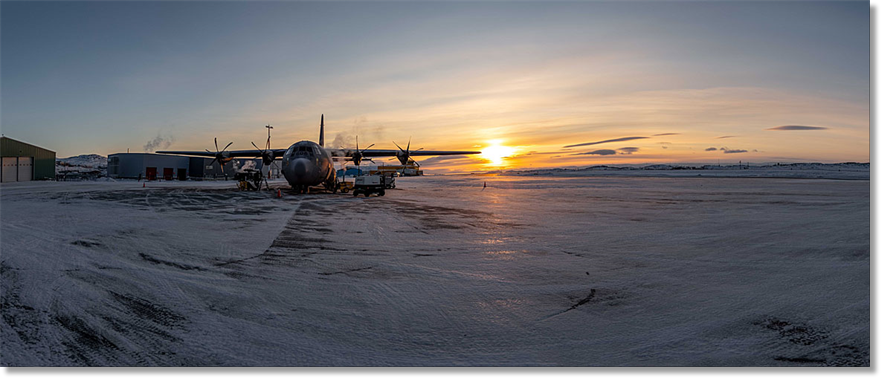
Members of the RCAF's 436 Transport Squadron supported the Public Health Agency of Canada with the delivery of special freezers from Ottawa to the northern Territories between 12 and 15 December 2020 to assist territorial health agencies with COVID-19 vaccine distribution.
The mission was part of Operation VECTOR, the Canadian Armed Forces’ support to the Government of Canada COVID-19 vaccine distribution and delivery efforts.
Royal Canadian Air Force
The mission was part of Operation VECTOR, the Canadian Armed Forces’ support to the Government of Canada COVID-19 vaccine distribution and delivery efforts.
Royal Canadian Air Force

From: George Graves, Carlisle, Cumbria
Subject: Lockdown Special VIII - Pandemic Stories
Hi Tony,
For 10 years now I've had a part time job, just 2 days a fortnight, delivering prescriptions for the chemist around the Carlisle area. With most of the customers being elderly, they're pleased to see me, especially now during this pandemic time. But now as the pandemic has peaked, the pharmacy have put me on leave until I've had my jab because at 79 I'm in the vulnerable age group. I know I'm getting on and not hard up, it's just that I enjoy doing it.
All the best and keep safe!
George
Subject: Lockdown Special VIII - Pandemic Stories
Hi Tony,
For 10 years now I've had a part time job, just 2 days a fortnight, delivering prescriptions for the chemist around the Carlisle area. With most of the customers being elderly, they're pleased to see me, especially now during this pandemic time. But now as the pandemic has peaked, the pharmacy have put me on leave until I've had my jab because at 79 I'm in the vulnerable age group. I know I'm getting on and not hard up, it's just that I enjoy doing it.
All the best and keep safe!
George

From: Andrew Spinks, Falmouth, Cornwall
Subject: Memories of Ottawa
Hi Tony,
A nice mince pie story! I used to look across the Ottawa River towards Gatineau when I was posted to CFB Ottawa in the late 70s. Worked with Geoff Beare, Colin Allen, Clive Bishop, George Templeton (?) and Mal Palfrey. I lived in Bayshore, which was nice then but has probably gone downhill since. Happy Days!
Happy New Year,
Andy
Subject: Memories of Ottawa
Hi Tony,
A nice mince pie story! I used to look across the Ottawa River towards Gatineau when I was posted to CFB Ottawa in the late 70s. Worked with Geoff Beare, Colin Allen, Clive Bishop, George Templeton (?) and Mal Palfrey. I lived in Bayshore, which was nice then but has probably gone downhill since. Happy Days!
Happy New Year,
Andy
RAAF Deliver Aerial Fire Retardant to Western Australia
One of our No. 36 Squadron C-17A Globemasters has flown urgently needed fire retardant provided by the NSW Rural Fire Service from RAAF Base Richmond to Busselton Margaret River Airport.
No. 22 Squadron Air Movements Section personnel load aerial fire retardant onto a No. 36 Squadron C-17A Globemaster aircraft at RAAF Base Richmond, New South Wales.
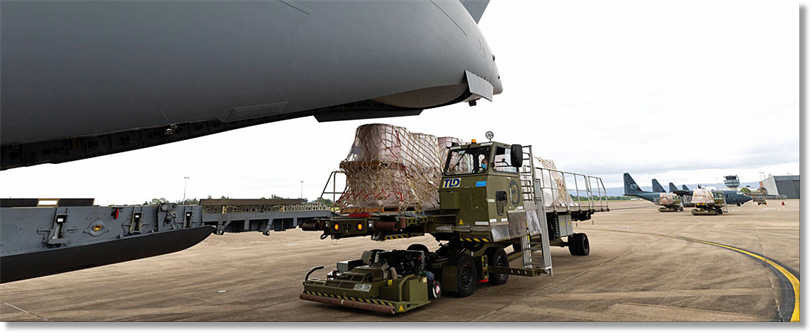
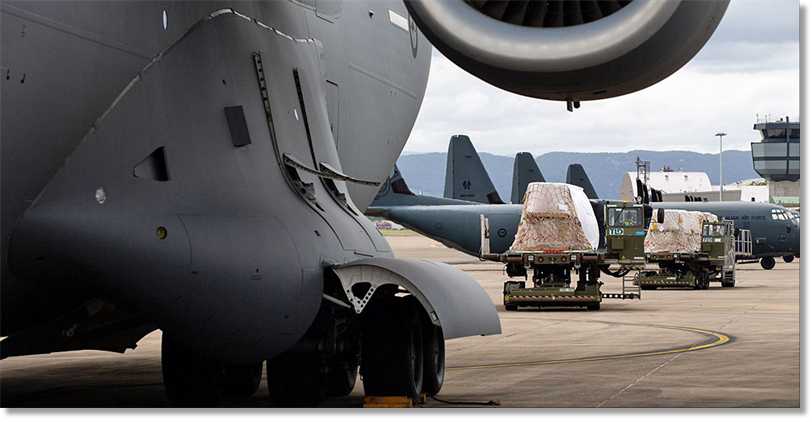
No. 22 Squadron Air Movements Section Truck Aircraft Loading and Unloading vehicles transport aerial fire retardant to No. 36 Squadron C-17A Globemaster aircraft at RAAF Base Richmond.
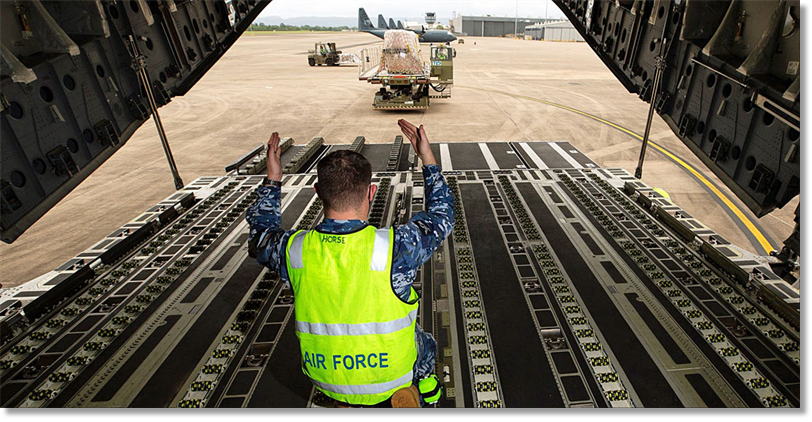
A No. 22 Squadron Air Movements Section Truck Aircraft Loading and Unloading vehicle loaded with aerial fire retardant is guided to the ramp of a No. 36 Squadron C-17A Globemaster aircraft
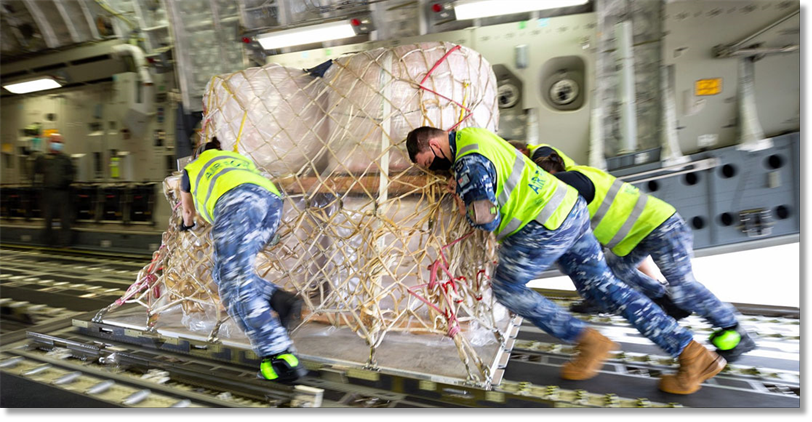
No. 22 Squadron Air Movements Section personnel load aerial fire retardant onto a No. 36 Squadron C-17A Globemaster aircraft at RAAF Base Richmond, New South Wales.
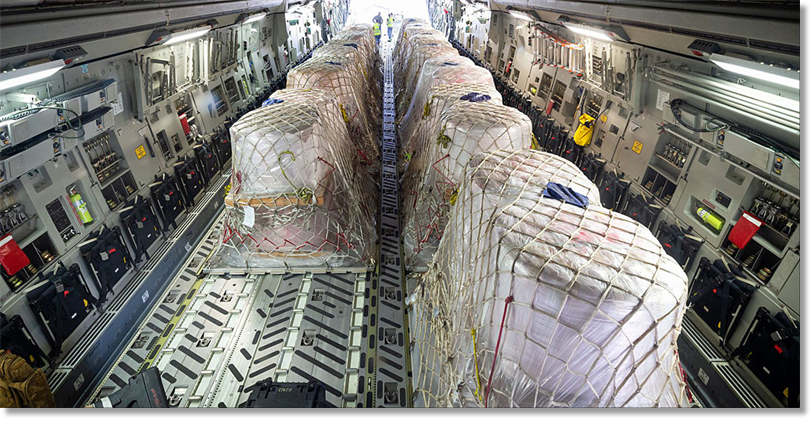
Aerial fire retardant on board a No. 36 Squadron C-17A Globemaster aircraft at RAAF Base Richmond, New South Wales.
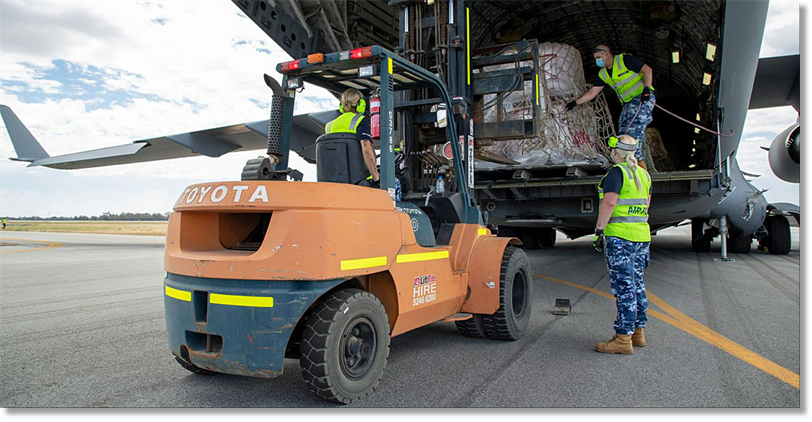
Air Force personnel work fast to unload aerial fire retardant for the Western Australian Department of Fire and Emergency Services at Busselton Margaret River Airport.
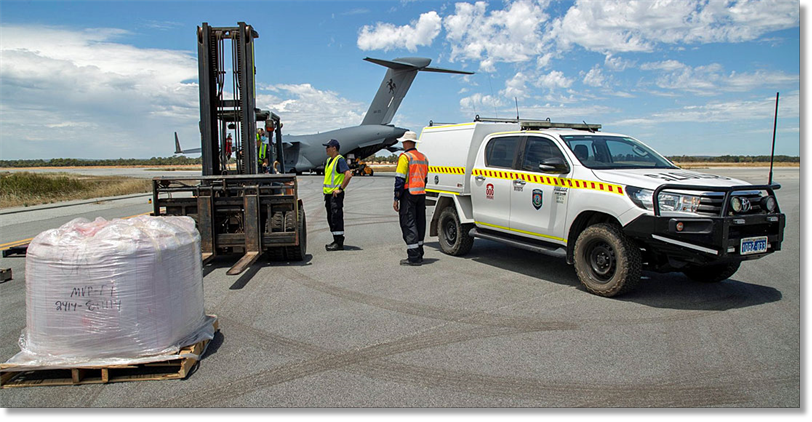
Forklift driver Leading Aircraft Woman Sophie Berthelot with Western Australian Department of Fire and Emergency Services member Michael Parker and Air Operations Manager Mike Stewart as aerial fire retardant is unloaded at Busselton Margaret River Airport.

From: David Powell, Princes Risborough, Bucks
Subject: Lockdown Special VIII - Pandemic Stories
Hi Tony,
Reflecting on the whole self-isolating on off on off on again COVID19 experience, not a lot to report.
Most bizarre experience – being invited to a telephone call clinic: to check my eyesight?
Most rewarding experience – discovering the Army Flying Museum monthly Monday night LockDown Lectures. Highly recommended and past lectures still available on the Museum web site. Also, they are free but donations to the museum always welcome.
Most frustrating experience – participating in the Warley Virtual National Event 2020 Model Railway Show in November. This replaced the usual annual event at the NEC, Birmingham where I normally spend an enjoyable weekend with model railway mates in the show control room.
Plan A was that I would be with a small crew at the Warley Club Rooms in Sandwell. But COVID19 meant that the Club Rooms were shut down and the show was put on with a dispersed crew operating from their homes. I spent most of the two days trying to get the hang of the StreamYard software we were using. It’s a bit like Zoom, but with many more bells and whistles.
Most unexpectedly nice experience – regular doorbell rings to find a half a dozen fresh eggs from Frank, a neighbour along the road who keeps some hens.
Most miserable experience – not being able to meet up with and hug our two grandchildren. We did try using Skype at the beginning, but the eldest (5 year old) found the virtual meetings very upsetting as they reinforced rather than replaced our absence, and these were abandoned.
Meanwhile, thankyou Tony for the regular newsletters – little rays of sunshine in a very foggy landscape.
Best wishes, happy New Year and stay safe.
David Powell
F Team RAF Abingdon 1967-69
Subject: Lockdown Special VIII - Pandemic Stories
Hi Tony,
Reflecting on the whole self-isolating on off on off on again COVID19 experience, not a lot to report.
Most bizarre experience – being invited to a telephone call clinic: to check my eyesight?
Most rewarding experience – discovering the Army Flying Museum monthly Monday night LockDown Lectures. Highly recommended and past lectures still available on the Museum web site. Also, they are free but donations to the museum always welcome.
Most frustrating experience – participating in the Warley Virtual National Event 2020 Model Railway Show in November. This replaced the usual annual event at the NEC, Birmingham where I normally spend an enjoyable weekend with model railway mates in the show control room.
Plan A was that I would be with a small crew at the Warley Club Rooms in Sandwell. But COVID19 meant that the Club Rooms were shut down and the show was put on with a dispersed crew operating from their homes. I spent most of the two days trying to get the hang of the StreamYard software we were using. It’s a bit like Zoom, but with many more bells and whistles.
Most unexpectedly nice experience – regular doorbell rings to find a half a dozen fresh eggs from Frank, a neighbour along the road who keeps some hens.
Most miserable experience – not being able to meet up with and hug our two grandchildren. We did try using Skype at the beginning, but the eldest (5 year old) found the virtual meetings very upsetting as they reinforced rather than replaced our absence, and these were abandoned.
Meanwhile, thankyou Tony for the regular newsletters – little rays of sunshine in a very foggy landscape.
Best wishes, happy New Year and stay safe.
David Powell
F Team RAF Abingdon 1967-69

From: Tim Pyne, Calne, Wilts
Subject: Lockdown Special VIII - Pandemic Stories
Hi Tony,
Have just started working as a volunteer with RE:ACT Disaster Response. We are supporting NHS staff at Ashton Gate Stadium, Bristol, which is being used as one of the 7 main UK vaccination centres in the UK for COVID-19.
No stories yet, will update you in due course. Stay safe.
Tim Pyne
Subject: Lockdown Special VIII - Pandemic Stories
Hi Tony,
Have just started working as a volunteer with RE:ACT Disaster Response. We are supporting NHS staff at Ashton Gate Stadium, Bristol, which is being used as one of the 7 main UK vaccination centres in the UK for COVID-19.
No stories yet, will update you in due course. Stay safe.
Tim Pyne
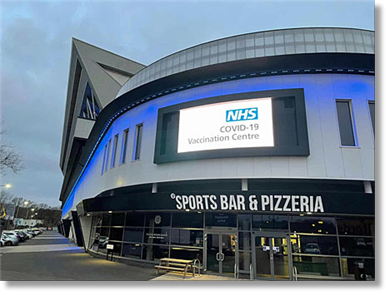
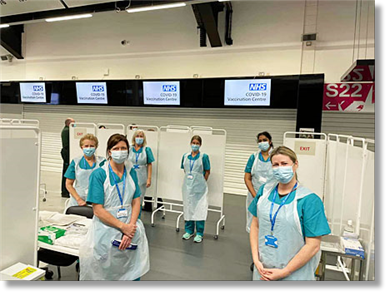
Royal Australian Air Force C17A
The C-17A's story begins with its first flight in the United States on 15 September 1991. Designed for the United States Air Force, the aircraft combined the capacity to carry outsized cargo with the ability to land on semi-prepared runways.
In RAAF service, those talents have allowed the C-17A to excel in a variety of missions. Operated by No. 36 Squadron at RAAF Base Amberley, the C-17A can carry up to 134 passengers or more than 70 tonnes of cargo, including armoured vehicles or helicopters. It can airdrop cargo or paratroopers, conduct aeromedical evacuation missions, and extend its already impressive range through air-to-air refuelling from a tanker such as the KC-30A.
The first four RAAF C-17As were delivered between December 2006 and March 2008, with additional aircraft delivered in 2011, 2012, and 2015 (two aircraft).
In RAAF service, those talents have allowed the C-17A to excel in a variety of missions. Operated by No. 36 Squadron at RAAF Base Amberley, the C-17A can carry up to 134 passengers or more than 70 tonnes of cargo, including armoured vehicles or helicopters. It can airdrop cargo or paratroopers, conduct aeromedical evacuation missions, and extend its already impressive range through air-to-air refuelling from a tanker such as the KC-30A.
The first four RAAF C-17As were delivered between December 2006 and March 2008, with additional aircraft delivered in 2011, 2012, and 2015 (two aircraft).
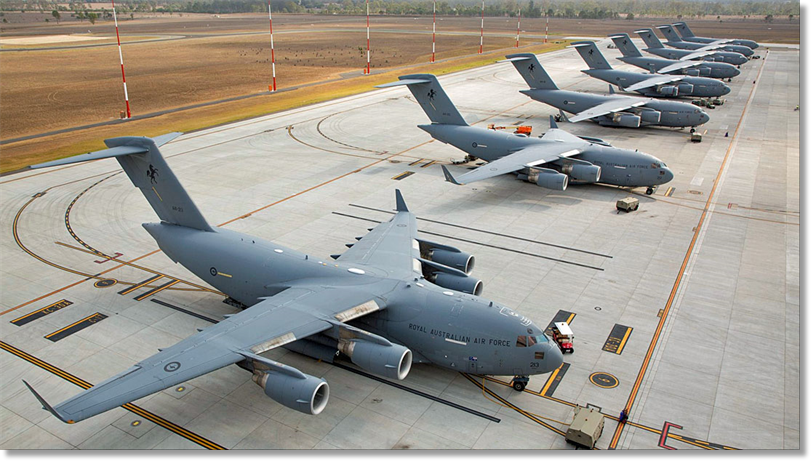
Since 2006, the C-17A has been instrumental to supporting Australian Defence Force (ADF) personnel deployed on operations and exercises, and bringing them home safely. This has ranged from within Australia (Operation Southern Indian Ocean, the search for MH370) to regional neighbours (Operation Astute in Timor-Leste) and much further abroad in Afghanistan, where the C-17A was instrumental to carrying large vehicles - including Australian Army Chinook helicopters - into theatre and then home again.
For support to deployed operations, we're recognising the late September 2014 deployment of Air Task Group 630 to the Middle East Region. Our largest air task group since the Vietnam War, it comprised of a KC-30A, an E-7A, and F/A-18F Super Hornets.
The Air Task Group began missions against Daesh in Iraq from 28 September 2014, and the continued success of the deployment - conducted at short-notice and over 12,000 kilometres from Australia - was thanks in large part to the contribution of C-17As in carrying personnel and equipment.
For support to deployed operations, we're recognising the late September 2014 deployment of Air Task Group 630 to the Middle East Region. Our largest air task group since the Vietnam War, it comprised of a KC-30A, an E-7A, and F/A-18F Super Hornets.
The Air Task Group began missions against Daesh in Iraq from 28 September 2014, and the continued success of the deployment - conducted at short-notice and over 12,000 kilometres from Australia - was thanks in large part to the contribution of C-17As in carrying personnel and equipment.
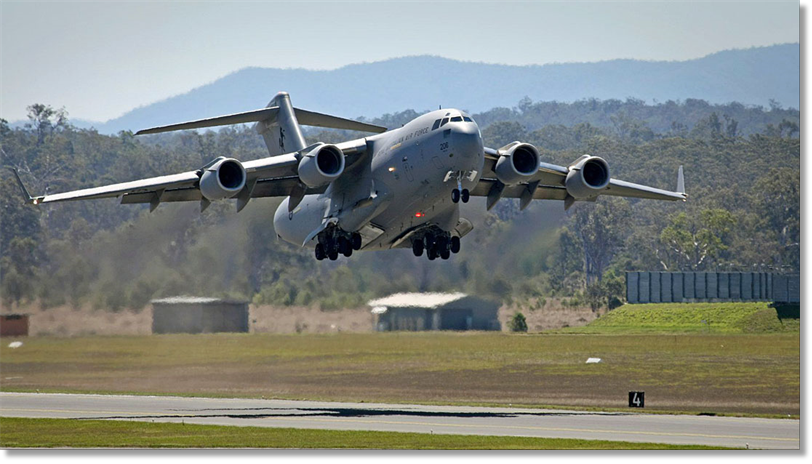
Four million flying hours by the international C-17A fleet has only been accomplished through the efforts of maintenance teams who keep the aircraft flying. In Australia, and a dedicated maintenance team at No. 36 Squadron - as well as Defence and industry partners like Boeing - supports the aircraft at home and abroad.
That team have recorded many achievements to keep RAAF and foreign Air Force C-17As operating. For a maintenance achievement, we're highlighting the 2009 engine change conducted at RMAF Base Butterworth in Malaysia.
It was the first engine change conducted on a C-17A by the RAAF, and required another C-17A to deliver the spare engine and some additional technicians, before picking up the stricken aircraft's original task.
The maintenance team remained at Butterworth and in the space of three days, they had changed out the unserviceable engine and had the aircraft ready to go again.
That team have recorded many achievements to keep RAAF and foreign Air Force C-17As operating. For a maintenance achievement, we're highlighting the 2009 engine change conducted at RMAF Base Butterworth in Malaysia.
It was the first engine change conducted on a C-17A by the RAAF, and required another C-17A to deliver the spare engine and some additional technicians, before picking up the stricken aircraft's original task.
The maintenance team remained at Butterworth and in the space of three days, they had changed out the unserviceable engine and had the aircraft ready to go again.
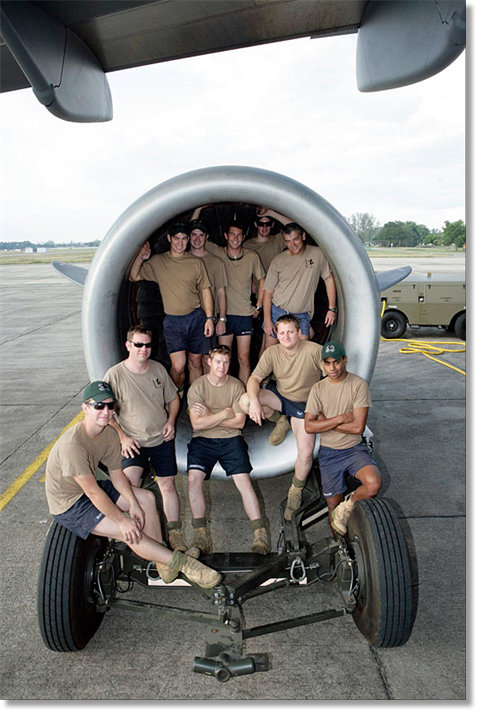
From floods and bushfires, to cyclone relief and even search and rescue missions - No. 36 Squadron has flown relief to many Australians in need. To showcase its contribution to domestic humanitarian assistance and disaster relief efforts, we're highlighting Operation Bushfire Assist 19/20.
Over the course of the operation, No. 36 Squadron flew relief missions from the United States (transporting fire retardant powder to Australia) and our regional neighbours (bringing response personnel and equipment from Papua New Guinea, Fiji, and New Zealand) . Within Australia, it carried Australian Army engineering teams, water purification plants, power generators, and other specialist equipment. Importantly, it also transported volunteer firefighters interstate to those areas affected by bushfires (illustrated here), and safely returned them home again.
Over the course of the operation, No. 36 Squadron flew relief missions from the United States (transporting fire retardant powder to Australia) and our regional neighbours (bringing response personnel and equipment from Papua New Guinea, Fiji, and New Zealand) . Within Australia, it carried Australian Army engineering teams, water purification plants, power generators, and other specialist equipment. Importantly, it also transported volunteer firefighters interstate to those areas affected by bushfires (illustrated here), and safely returned them home again.
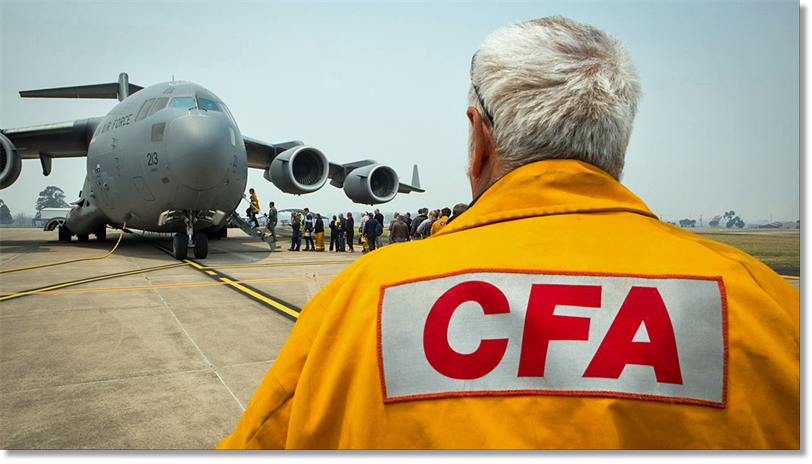
All too many times, the ADF has been called out in response to a humanitarian assistance and disaster relief mission somewhere on the globe, and often the first response has been delivered by a No. 36 Squadron C-17A.
For this mission, we're recognising Operation Pacific Assist - the response to the 2011 Tōhoku earthquake and tsunami, which extended to supporting efforts to combat the Fukushima Daiichi nuclear disaster. Beginning with the deployment of Urban Search and Rescue specialists and their equipment from Australia, the operation extended into an effort to support Japan Self-Defense Force personnel deploying into disaster areas. They also responded to a request to deliver remote-control water cannons from Perth, allowing them to be used in the response to the Fukushima meltdown.
At one point during the operation, all three of No. 36 Squadron's available C-17As were deployed to Japan to support local efforts. More than 453 tonnes of cargo was moved, including 41 vehicles and 135 personnel.
For this mission, we're recognising Operation Pacific Assist - the response to the 2011 Tōhoku earthquake and tsunami, which extended to supporting efforts to combat the Fukushima Daiichi nuclear disaster. Beginning with the deployment of Urban Search and Rescue specialists and their equipment from Australia, the operation extended into an effort to support Japan Self-Defense Force personnel deploying into disaster areas. They also responded to a request to deliver remote-control water cannons from Perth, allowing them to be used in the response to the Fukushima meltdown.
At one point during the operation, all three of No. 36 Squadron's available C-17As were deployed to Japan to support local efforts. More than 453 tonnes of cargo was moved, including 41 vehicles and 135 personnel.
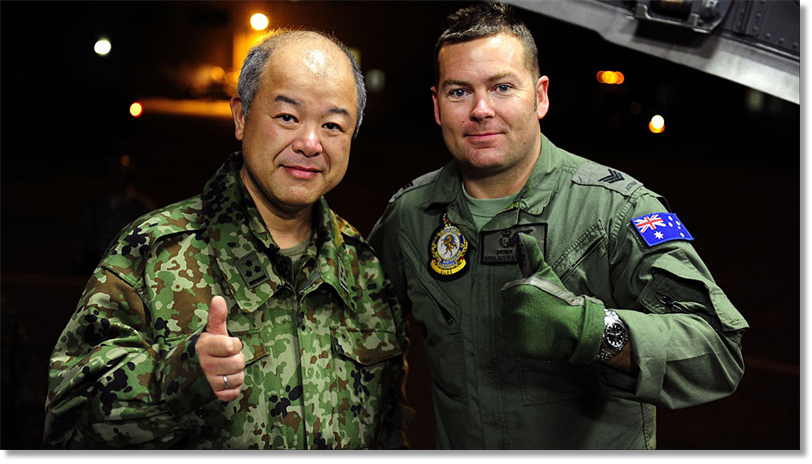
Whether it's a C-17A flypast or a static display, or even just flying an approach to your nearest airport - its fair to say from the photos you share with us, our C-17As have left an impression on the public.
Public engagement like this provides an opportunity for us to showcase the C-17A, its role, and its contribution to Defence and the Australian Government. Some members of the public have had the rare opportunity to fly on our C-17As, and even parachute from the aircraft during charity fundraising for Legacy Australia.
But for public engagement, it's hard to look past the appearances put in by No. 36 Squadron and the C-17A at the Australian International Airshow at Avalon. Since February 2007, hundreds of thousands of Australians have either walked through our C-17A, or seen it conduct a flying display. Importantly, the air show has provided an opportunity to speak to our C-17A crews, and find out firsthand what they do.
Public engagement like this provides an opportunity for us to showcase the C-17A, its role, and its contribution to Defence and the Australian Government. Some members of the public have had the rare opportunity to fly on our C-17As, and even parachute from the aircraft during charity fundraising for Legacy Australia.
But for public engagement, it's hard to look past the appearances put in by No. 36 Squadron and the C-17A at the Australian International Airshow at Avalon. Since February 2007, hundreds of thousands of Australians have either walked through our C-17A, or seen it conduct a flying display. Importantly, the air show has provided an opportunity to speak to our C-17A crews, and find out firsthand what they do.
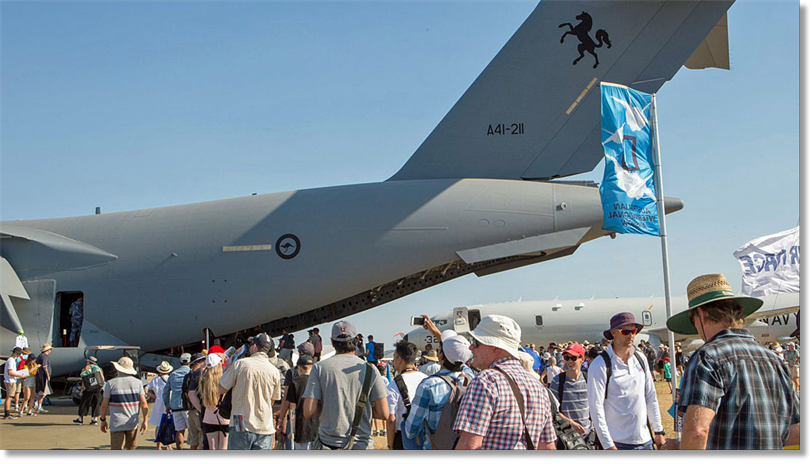
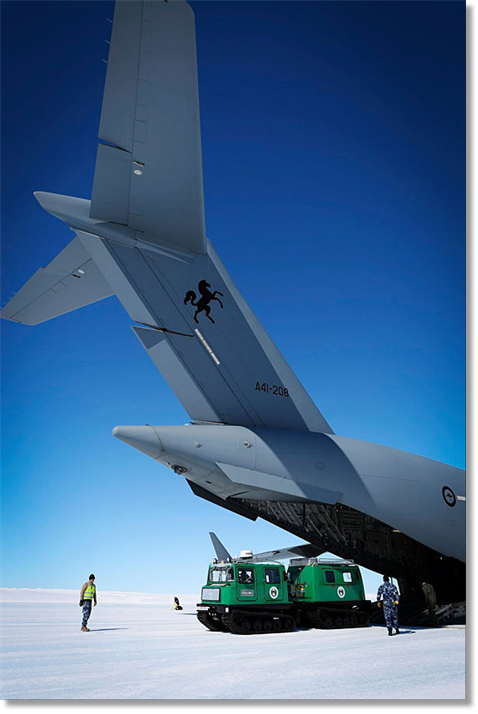
Since November 2015, Operation Southern Discovery has explored many of the airlift talents of the C-17A, and tested No. 36 Squadron's skills at planning and flying missions to the frozen continent.
The summer missions in support of antarctica.gov.au involve flying a round trip of more than 7000 kilometres from Hobart or Avalon Airport. On this operation, the fleet has achieved many milestones - from using new methods of airdrop technology with Australian Army to resupply our scientists, to transporting helicopters back to Hobart for servicing.
An honourable mention goes to the November 2017 mission to airdrop supplies to Davis Research Station, which involved an in-flight refuel from a KC-30A over the Southern Ocean.
But for this category, we're recognising the first resupply mission in November 2015. Delivering dual-cab Hägglunds snow vehicles (pictured here), along with building materials, the mission demonstrated a massive increase to how the RAAF could aid the wider Australian government, and set the precedent for future successful missions to Antarctica.
The summer missions in support of antarctica.gov.au involve flying a round trip of more than 7000 kilometres from Hobart or Avalon Airport. On this operation, the fleet has achieved many milestones - from using new methods of airdrop technology with Australian Army to resupply our scientists, to transporting helicopters back to Hobart for servicing.
An honourable mention goes to the November 2017 mission to airdrop supplies to Davis Research Station, which involved an in-flight refuel from a KC-30A over the Southern Ocean.
But for this category, we're recognising the first resupply mission in November 2015. Delivering dual-cab Hägglunds snow vehicles (pictured here), along with building materials, the mission demonstrated a massive increase to how the RAAF could aid the wider Australian government, and set the precedent for future successful missions to Antarctica.
New acquisitions for Defence and other government departments have required the airlift talents of a No. 36 Squadron C-17A to bring equipment and vehicles to Australia, and sustain them once they have been delivered.
In a handful of instances, RAAF C-17As have even delivered retired warbirds and historic equipment to museums at home and abroad, including an F-111 and TA-4 Skyhawk, and a World War One tank.
Specialist equipment for new aircraft such as the F-35A, F/A-18F and E/A-18G have all 'hitched a lift' on a C-17A, and in other instances new aircraft have been brought home to Australia. This includes the Royal Australian Navy's MH-60R helicopters, with the 24-strong fleet brought to HMAS Albatross in NSW from 2014 onwards.
In a handful of instances, RAAF C-17As have even delivered retired warbirds and historic equipment to museums at home and abroad, including an F-111 and TA-4 Skyhawk, and a World War One tank.
Specialist equipment for new aircraft such as the F-35A, F/A-18F and E/A-18G have all 'hitched a lift' on a C-17A, and in other instances new aircraft have been brought home to Australia. This includes the Royal Australian Navy's MH-60R helicopters, with the 24-strong fleet brought to HMAS Albatross in NSW from 2014 onwards.
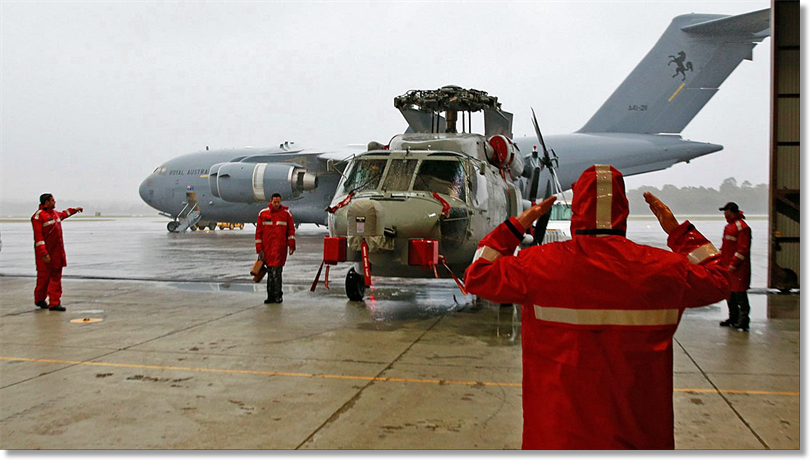
It has been the sad duty of No. 36 Squadron to conduct repatriation flights of Australians - and other foreign citizens - who have died overseas.
This has included those killed on contemporary operations such as Operation Slipper in Afghanistan, through to Operation Reunite - the return of 33 Australian service personnel and dependents from cemeteries in Malaysia and Singapore, many of whom were casualties of the Vietnam War.
For this mission, we're highlighting Operation Bring Them Home - also known as Operation Hawick - the 2014 response to the repatriate the bodies of those killed in the tragic downing of Malaysia Airlines flight MH17. As well as deploying the international search operation in the disaster area, No. 36 Squadron assisted Dutch authorities with the return of victims from Kharkiv in Ukraine to Eindhoven in the Netherlands (pictured here), and then continued the repatriation of 22 victims over several sorties from Eindhoven to Melbourne.
This has included those killed on contemporary operations such as Operation Slipper in Afghanistan, through to Operation Reunite - the return of 33 Australian service personnel and dependents from cemeteries in Malaysia and Singapore, many of whom were casualties of the Vietnam War.
For this mission, we're highlighting Operation Bring Them Home - also known as Operation Hawick - the 2014 response to the repatriate the bodies of those killed in the tragic downing of Malaysia Airlines flight MH17. As well as deploying the international search operation in the disaster area, No. 36 Squadron assisted Dutch authorities with the return of victims from Kharkiv in Ukraine to Eindhoven in the Netherlands (pictured here), and then continued the repatriation of 22 victims over several sorties from Eindhoven to Melbourne.
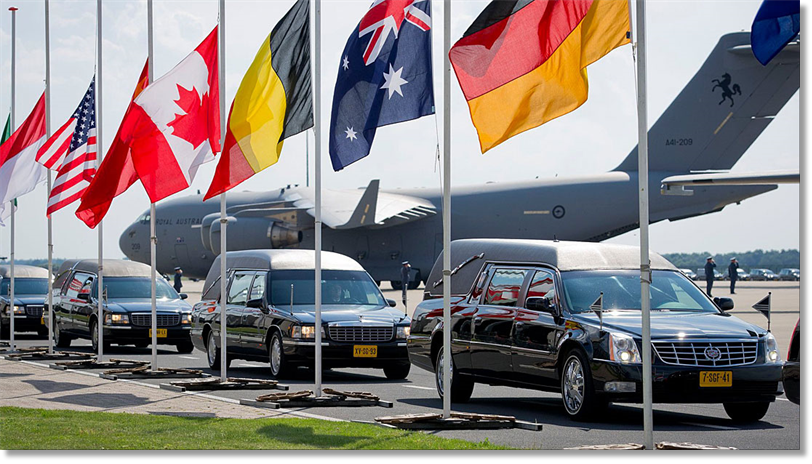
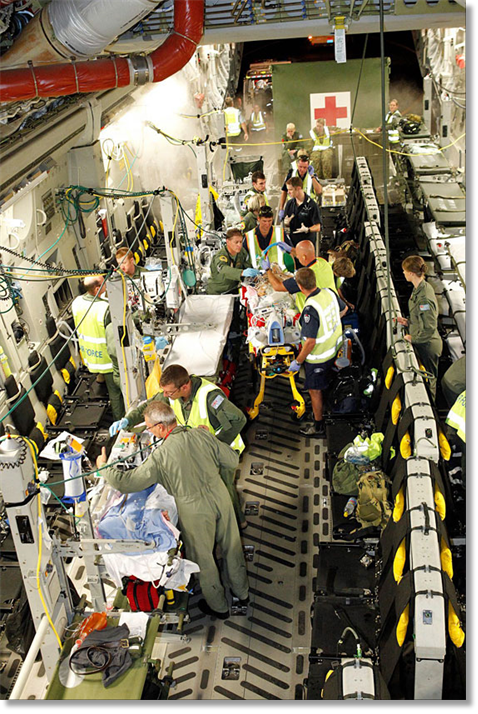
The size, speed and range of the C-17A means the ADF can conduct aeromedical evacuation missions both domestically and abroad.
During Operation Catalyst in Afghanistan, the C-17A conducted a number of AME missions for Australian service people, but for this category we're recognising its contribution to the civilian community during Operation Yasi Assist in February 2011.
With Tropical Cyclone Yasi bearing down on Cairns, a pair of C-17As were dispatched (along with two C-130s) to support the evacuation of Cairns Hospital. With a cyclone bearing down on the city, the C-17As were loaded with high-dependency patients, and flew them to safety in Brisbane.
During Operation Catalyst in Afghanistan, the C-17A conducted a number of AME missions for Australian service people, but for this category we're recognising its contribution to the civilian community during Operation Yasi Assist in February 2011.
With Tropical Cyclone Yasi bearing down on Cairns, a pair of C-17As were dispatched (along with two C-130s) to support the evacuation of Cairns Hospital. With a cyclone bearing down on the city, the C-17As were loaded with high-dependency patients, and flew them to safety in Brisbane.
Being able to carry people and cargo over long distances has made Australian C-17As invaluable to global peacekeeping missions. In recent years, this has included carrying Fijian military personnel to Iraq, Lebanon, and the Sinai, as well as Vietnamese health personnel to South Sudan.
One of its biggest achievements came on Christmas Day 2013, when a C-17A left Australia in support of Operation Aslan - Australia's contribution to the United Nations Mission in South Sudan.
From 3-12 January 2014, the C-17A flew eight missions to deliver 175 tonnes of cargo including tents, water purification and sanitation equipment, and other relied aid from Brindisi in Italy to Juba in South Sudan.
One of its biggest achievements came on Christmas Day 2013, when a C-17A left Australia in support of Operation Aslan - Australia's contribution to the United Nations Mission in South Sudan.
From 3-12 January 2014, the C-17A flew eight missions to deliver 175 tonnes of cargo including tents, water purification and sanitation equipment, and other relied aid from Brindisi in Italy to Juba in South Sudan.
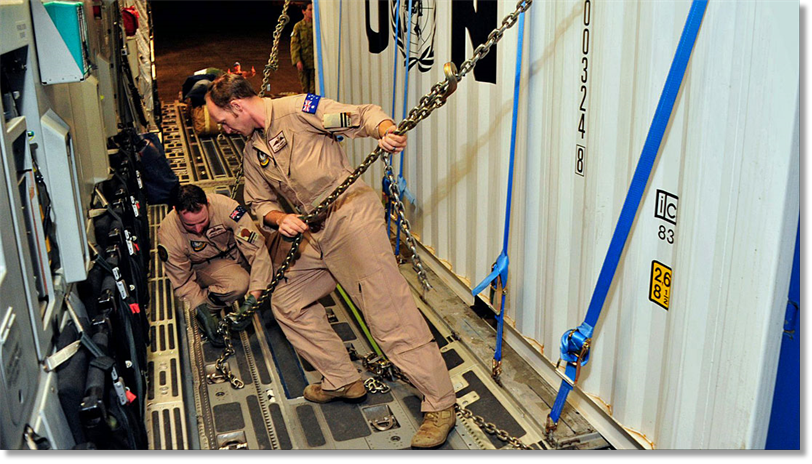

From: Richard Lloyd, Dunfermline, Fife
Subject: Lockdown Special VIII - Pandemic Stories
Hi Tony,
During this lockdown, I’ve been occasionally busy making chilli jam (very hot and sweet), limoncello (extremely alcoholic), and red pepper and tomato chutney (ideal in a roast beef sandwich).
Some of all of these products have been given away to family and friends and well received. Everything is done properly; here’s the label off the chutney!
Best regards
Richard
Subject: Lockdown Special VIII - Pandemic Stories
Hi Tony,
During this lockdown, I’ve been occasionally busy making chilli jam (very hot and sweet), limoncello (extremely alcoholic), and red pepper and tomato chutney (ideal in a roast beef sandwich).
Some of all of these products have been given away to family and friends and well received. Everything is done properly; here’s the label off the chutney!
Best regards
Richard


From: Michael (OBie) O'Brien, Corinda, QLD
Subject: Lockdown Special VIII - Pandemic Stories
G’Day Tony, and as usual, BZ for your efforts to keep us all in the loop during these “interesting times” in which we live!
Re “Pandemic Stories”, I’ve maintained my anti-social demeanour towards the hordes of unwashed who’ve descended upon us for the Festering Season’s alleged lockdown - ie, they leave their own lurgi-ridden enclaves up around Cockeroach Capital [aka Sydney], and come down to our pristine paradise to pollute the beaches … Bah, Humbug! The good thing, tho’, is it keeps me out of the shopping centre, thus reducing my likelihood of getting infected.
Dunno ‘bout “… havin’ faeires at the bottom of my garden", but I quite happily enjoy the company of our locals, and having the opportunity to appreciate the marvels of our environment, for whom I keep the herbiage on the front paddock at an attractive length [depth]. Keep yaself nice, and be careful out [oot?] there,
Cop Ya,
OBie
Subject: Lockdown Special VIII - Pandemic Stories
G’Day Tony, and as usual, BZ for your efforts to keep us all in the loop during these “interesting times” in which we live!
Re “Pandemic Stories”, I’ve maintained my anti-social demeanour towards the hordes of unwashed who’ve descended upon us for the Festering Season’s alleged lockdown - ie, they leave their own lurgi-ridden enclaves up around Cockeroach Capital [aka Sydney], and come down to our pristine paradise to pollute the beaches … Bah, Humbug! The good thing, tho’, is it keeps me out of the shopping centre, thus reducing my likelihood of getting infected.
Dunno ‘bout “… havin’ faeires at the bottom of my garden", but I quite happily enjoy the company of our locals, and having the opportunity to appreciate the marvels of our environment, for whom I keep the herbiage on the front paddock at an attractive length [depth]. Keep yaself nice, and be careful out [oot?] there,
Cop Ya,
OBie
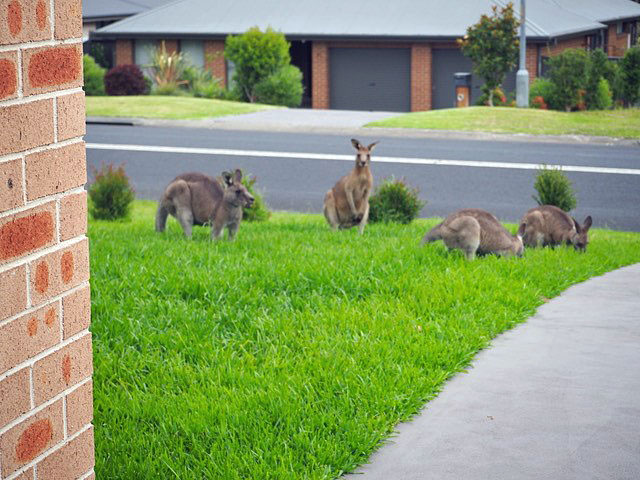

What it's like at America's Northernmost Military Base in Greenland

From: Trevor Porter, Vung Tau
Subject: Lockdown Special VIII - Pandemic Stories
My lockdown story is slightly unusual. I live in Malta and although we have a very short winter, it's usually January, February and March, I still find it too cold with the humidity and a house which is difficult to heat. So, for the last seventeen years I always travel to SE Asia and return mid April when the weather is warming up.
In January 2020, I departed for my shortest visit ever which was to be exactly three calendar months. The reason for this was because I was traveling to Vietnam and the visa was for three months, the flights for these dates where the cheapest and my apartment is also rented by the month.
As soon as the pandemic hit the world, the Vietnamese government closed the borders and cancelled incoming international flights. They have a hugely successful track and trace system so any Covid problems are very quickly isolated along with any contacts.
So the bottom line is, one year on and I'm still in Vietnam, living a totally normal life with absolutely no restrictions except for the fact that I'm stuck here at the moment. I'm in the south of Vietnam where the weather is 33ºC most days and beer is 50 pence for slightly less than a pint in my local bar and 37 pence if a walk to Vietnamese bar 500 metres away.
Things could be much worse. I feel blessed.
Subject: Lockdown Special VIII - Pandemic Stories
My lockdown story is slightly unusual. I live in Malta and although we have a very short winter, it's usually January, February and March, I still find it too cold with the humidity and a house which is difficult to heat. So, for the last seventeen years I always travel to SE Asia and return mid April when the weather is warming up.
In January 2020, I departed for my shortest visit ever which was to be exactly three calendar months. The reason for this was because I was traveling to Vietnam and the visa was for three months, the flights for these dates where the cheapest and my apartment is also rented by the month.
As soon as the pandemic hit the world, the Vietnamese government closed the borders and cancelled incoming international flights. They have a hugely successful track and trace system so any Covid problems are very quickly isolated along with any contacts.
So the bottom line is, one year on and I'm still in Vietnam, living a totally normal life with absolutely no restrictions except for the fact that I'm stuck here at the moment. I'm in the south of Vietnam where the weather is 33ºC most days and beer is 50 pence for slightly less than a pint in my local bar and 37 pence if a walk to Vietnamese bar 500 metres away.
Things could be much worse. I feel blessed.

From: Thomas Iredale, Heidelberg
Subject: RE: UKMAMS OBA OBB #122820
Excellent, Tony – a really good edition. Apologies for being absent on parade – no excuse, sir!
The coming year, 2021, will be the 55th anniversary of my EOTS course at Upwood, back in the dark days of 1966. Our 50th was celebrated at RAF Brize Norton; the 55th will not be so grand, but several of us will gather for a reunion lunch in the RAF Club on 5 November – which is also the date of the Movers’ Reunion in same place – at which we will attend, so will have a Movers+++ day really.
Dick Lloyd, Duncan Grant, Allan Henchoz, John Pye, Ian Macrae and Martin Henderson have signalled attendance and I am waiting to hear from one or two more e.g. Chas Clark. One of our instructors, Brian Everett will also attend. He was at one time the SAMO in Luqa and in November marched at the Remembrance Day parade at the Cenotaph in London. I have attached a photo of him (extracted from a video).
Stay well and Happy New Year.
Cheers, Tom
Subject: RE: UKMAMS OBA OBB #122820
Excellent, Tony – a really good edition. Apologies for being absent on parade – no excuse, sir!
The coming year, 2021, will be the 55th anniversary of my EOTS course at Upwood, back in the dark days of 1966. Our 50th was celebrated at RAF Brize Norton; the 55th will not be so grand, but several of us will gather for a reunion lunch in the RAF Club on 5 November – which is also the date of the Movers’ Reunion in same place – at which we will attend, so will have a Movers+++ day really.
Dick Lloyd, Duncan Grant, Allan Henchoz, John Pye, Ian Macrae and Martin Henderson have signalled attendance and I am waiting to hear from one or two more e.g. Chas Clark. One of our instructors, Brian Everett will also attend. He was at one time the SAMO in Luqa and in November marched at the Remembrance Day parade at the Cenotaph in London. I have attached a photo of him (extracted from a video).
Stay well and Happy New Year.
Cheers, Tom
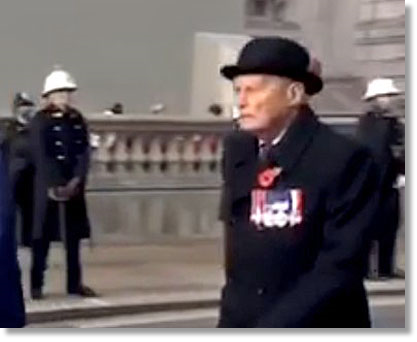

From: Brian Everett, Darlington, Co Durham
Subject: A very different Remembrance Day
Yes, the photo in Tom's e-mail (above) is of me attending the November parade in Whitehall, one of only 22 selected representing the 10,000 who would normally attend. Rather an odd day, as the city was almost deserted.
Had a chat with the PM after the event in the FCO before returning home having spent a rather strange evening in the RAF Club the night before, eating my meals in my bedroom! The train journey home was also weird as I was the only one in the carriage!
Please pass on my regards to everyone.
Best wishes,
Brian
Subject: A very different Remembrance Day
Yes, the photo in Tom's e-mail (above) is of me attending the November parade in Whitehall, one of only 22 selected representing the 10,000 who would normally attend. Rather an odd day, as the city was almost deserted.
Had a chat with the PM after the event in the FCO before returning home having spent a rather strange evening in the RAF Club the night before, eating my meals in my bedroom! The train journey home was also weird as I was the only one in the carriage!
Please pass on my regards to everyone.
Best wishes,
Brian


First Royal Air Force Wedgetail Radar Plane will be Converted from an ex-Chinese Airliner
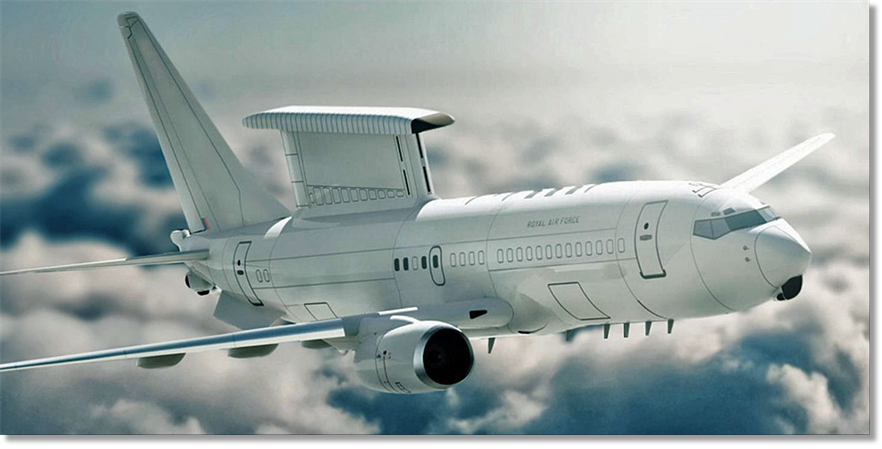
The first Boeing E-7 Wedgetail airborne early warning and control aircraft for the British Royal Air Force will be a converted 737-700 Boeing Business Jet last operated by a Chinese airline.
The initial 737 to be converted for the Royal Air Force’s Wedgetail contract currently wears the U.S. aircraft registration number N946BC and has the Boeing construction number 38633. The most intriguing aspects about this choice of the airframe are its age — it was first flown back in June 2010 — and the fact that it was previously flown by Chinese carrier Deer Jet, a charter operator based in Beijing. It is unclear why Deer Jet, which describes itself as having “the largest fleet of business jets in the Asia-Pacific region,” gave up the airframe, which is currently owned by the manufacturer, Boeing, and stored at San Bernardino International Airport in California.
The aircraft is due to arrive in the United Kingdom this month, before being converted to airborne early warning and control (AEW&C) standard by STS Aviation Services at its Birmingham Airport facility. Boeing UK confirmed last November 2 that the first fuselage sections for the initial two Royal Air Force Wedgetail aircraft had been delivered to STS.
Once conversion work is complete, the first aircraft is scheduled to be delivered to the Royal Air Force as a Wedgetail AEW1 in 2023 and will be operated from RAF Lossiemouth in Scotland. The final aircraft should arrive at the base in 2026.
War Zone
The initial 737 to be converted for the Royal Air Force’s Wedgetail contract currently wears the U.S. aircraft registration number N946BC and has the Boeing construction number 38633. The most intriguing aspects about this choice of the airframe are its age — it was first flown back in June 2010 — and the fact that it was previously flown by Chinese carrier Deer Jet, a charter operator based in Beijing. It is unclear why Deer Jet, which describes itself as having “the largest fleet of business jets in the Asia-Pacific region,” gave up the airframe, which is currently owned by the manufacturer, Boeing, and stored at San Bernardino International Airport in California.
The aircraft is due to arrive in the United Kingdom this month, before being converted to airborne early warning and control (AEW&C) standard by STS Aviation Services at its Birmingham Airport facility. Boeing UK confirmed last November 2 that the first fuselage sections for the initial two Royal Air Force Wedgetail aircraft had been delivered to STS.
Once conversion work is complete, the first aircraft is scheduled to be delivered to the Royal Air Force as a Wedgetail AEW1 in 2023 and will be operated from RAF Lossiemouth in Scotland. The final aircraft should arrive at the base in 2026.
War Zone

From: Barry Tappenden, Shortstown, Beds
Subject: Lockdown Special VIII - Pandemic Stories
Hi Tony, hope you enjoyed your mince pies!!
Lockdown is much the same here in Bedford, still banging out some classic tunes for Hospital Radio Bedford (HRB) as well as a 2 hour programme informing “our customers” what is going on with this pandemic via our CSi shows (Community Service Information).
Currently we have had some very wet weather and flooding in this area so our CSi shows have been giving out much needed flood reports and information. If any one would like a dedication or message which goes out on www.hospitalradiobedford.org.uk, so that you can keep in touch, send us an email studio@hospitalradiobedford.org.uk with a preferred time you would like it to go out, time difference across the world, and “we” at HRB will give you a shout out.
With lockdown, it's good to stay in touch. Tony, and all the members and your families, stay safe.
Barry
Subject: Lockdown Special VIII - Pandemic Stories
Hi Tony, hope you enjoyed your mince pies!!
Lockdown is much the same here in Bedford, still banging out some classic tunes for Hospital Radio Bedford (HRB) as well as a 2 hour programme informing “our customers” what is going on with this pandemic via our CSi shows (Community Service Information).
Currently we have had some very wet weather and flooding in this area so our CSi shows have been giving out much needed flood reports and information. If any one would like a dedication or message which goes out on www.hospitalradiobedford.org.uk, so that you can keep in touch, send us an email studio@hospitalradiobedford.org.uk with a preferred time you would like it to go out, time difference across the world, and “we” at HRB will give you a shout out.
With lockdown, it's good to stay in touch. Tony, and all the members and your families, stay safe.
Barry

From: Pete Kettell, Chudleigh, Devon
Subject: Lockdown Special VIII - Christmas Story
Hi Tony, here’s my Christmas Day story:
On Christmas morning I found myself staring at a turkey that could feed 25 and now there were now only 3 of us thanks to the 5-day family COVID bubble being cancelled at the last minute!
I was listening to Radio Devon when an emergency appeal came on asking for urgent help at a care home on Dartmoor where the gas had run out and the 30 elderly residents, who hadn’t seen their loved ones for months, now couldn't have their Christmas Dinner or any other meals for that matter until supplies were restored.
I put my coffee down and rang the care home. I had a gas bottle that should fit so loaded up my pickup and sped off onto the Moor to try and find the place. When I arrived I was greeted by anxious staff and much to my annoyance found the bottles I had with me were too small to attach to the short regulator hose. In true MAMS fashion I had to improvise by lashing one onto a sturdy wooden garden chair using the chains I always carry (fondly hoping I can one day use them in anger again). Whilst lashing down, a phone was passed to me with the Radio Devon presenter on the other end and I proceeded to give updates on progress live on air. As the gas supply was restored, clapping rang out from the care home, the sprouts were put on the gas ring and they had their Christmas Dinner on time.
So, a different Christmas day for me, but being a quiet news day the incident was aired on the hourly news bulletins and by the end of the day it was being read out on national radio under the heading ‘Devon man saves Christmas’. For the record we finished eating the last of our turkey on January 4th.
Pete Kettell
Delta Team 82-84
Subject: Lockdown Special VIII - Christmas Story
Hi Tony, here’s my Christmas Day story:
On Christmas morning I found myself staring at a turkey that could feed 25 and now there were now only 3 of us thanks to the 5-day family COVID bubble being cancelled at the last minute!
I was listening to Radio Devon when an emergency appeal came on asking for urgent help at a care home on Dartmoor where the gas had run out and the 30 elderly residents, who hadn’t seen their loved ones for months, now couldn't have their Christmas Dinner or any other meals for that matter until supplies were restored.
I put my coffee down and rang the care home. I had a gas bottle that should fit so loaded up my pickup and sped off onto the Moor to try and find the place. When I arrived I was greeted by anxious staff and much to my annoyance found the bottles I had with me were too small to attach to the short regulator hose. In true MAMS fashion I had to improvise by lashing one onto a sturdy wooden garden chair using the chains I always carry (fondly hoping I can one day use them in anger again). Whilst lashing down, a phone was passed to me with the Radio Devon presenter on the other end and I proceeded to give updates on progress live on air. As the gas supply was restored, clapping rang out from the care home, the sprouts were put on the gas ring and they had their Christmas Dinner on time.
So, a different Christmas day for me, but being a quiet news day the incident was aired on the hourly news bulletins and by the end of the day it was being read out on national radio under the heading ‘Devon man saves Christmas’. For the record we finished eating the last of our turkey on January 4th.
Pete Kettell
Delta Team 82-84

Exercise Mizra II - Support to the Sudanese Government - Part 1
By Ian Berry
By Ian Berry
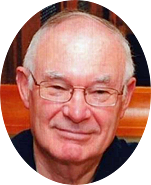
We were to be based in Khartoum and support the efforts of 32 Squadron, Royal Engineers, who were operating in the South of the country at Tonj, close to the border with the Central African Republic. Their primary task was to build or repair roads and bridges and dig wells for the local population.
At the start of 1974, most of UKMAMS at RAF Abingdon were preparing to transfer across to RAF Lyneham permanently. I was tasked with Junior Tech (JT) Ted Moore, one of the last Supply Movers of that rank, to head elsewhere, namely RAF Thorney Island, to meet up with 2 x 4 man crews (Pilot, Co, Navigator & AQM (Air Quartermaster/Loadmaster)), and a 5-man servicing team. We were tasked to travel to Khartoum, in the Sudan, and operate from there for 3 months in support of the Royal Engineers. The task was known as Exercise Mirza II.
In early January we travelled to RAF Thorney Island and met up with the rest of the party. I must admit this was quite a character building exercise as we two were strangers from Abingdon whereas the rest of the guys knew each other. The Detatchment Commander was a Squadron Leader and also one of the Navigators, a really nice guy too which helped things go well.
There was no real time even for a briefing and we were soon off on our adventure! The Andover (XS602) was fitted out with Beverley Double seats and other servicing equipment. The majority of the rest of the equipment required to maintain the aircraft, para seats, power sets, hydraulic trolleys and the like had already been pre-positioned by C130 in Khartoum.
The trip from Thorney Island to Khartoum took a total of four days, staging through Istres, Naples, Souda Bay, Akrotiri, Luxor, Port Sudan and finally Khartoum. Luxor was interesting as most of the Hardened Shelters had been bombed by the Israelis during the Yom Kippur war some 6 months earlier. Port Sudan was also interesting as it was just a hard packed sand strip and oil soaked. In fact as we departed at dusk they had laid out and lit “Gooseneck” flares to illuminate the runway.
At the start of 1974, most of UKMAMS at RAF Abingdon were preparing to transfer across to RAF Lyneham permanently. I was tasked with Junior Tech (JT) Ted Moore, one of the last Supply Movers of that rank, to head elsewhere, namely RAF Thorney Island, to meet up with 2 x 4 man crews (Pilot, Co, Navigator & AQM (Air Quartermaster/Loadmaster)), and a 5-man servicing team. We were tasked to travel to Khartoum, in the Sudan, and operate from there for 3 months in support of the Royal Engineers. The task was known as Exercise Mirza II.
In early January we travelled to RAF Thorney Island and met up with the rest of the party. I must admit this was quite a character building exercise as we two were strangers from Abingdon whereas the rest of the guys knew each other. The Detatchment Commander was a Squadron Leader and also one of the Navigators, a really nice guy too which helped things go well.
There was no real time even for a briefing and we were soon off on our adventure! The Andover (XS602) was fitted out with Beverley Double seats and other servicing equipment. The majority of the rest of the equipment required to maintain the aircraft, para seats, power sets, hydraulic trolleys and the like had already been pre-positioned by C130 in Khartoum.
The trip from Thorney Island to Khartoum took a total of four days, staging through Istres, Naples, Souda Bay, Akrotiri, Luxor, Port Sudan and finally Khartoum. Luxor was interesting as most of the Hardened Shelters had been bombed by the Israelis during the Yom Kippur war some 6 months earlier. Port Sudan was also interesting as it was just a hard packed sand strip and oil soaked. In fact as we departed at dusk they had laid out and lit “Gooseneck” flares to illuminate the runway.
As part of HM Government today there is a Department for International Development which has a £2bn+ budget it hands out as overseas aid. Sadly as we all know some of these £millions are then squirreled away to a Swiss bank account by the countries Leader or converted into a fleet of Mercedes for use by their Civil Servants.
In the 1970's this was not the case and instead of money, aid was sent in kind. This way the population were usually able to benefit. The British military also benefitted from the “live” training. My detachment to the Sudan with an Andover of 46 Squadron was such an example.
In the 1970's this was not the case and instead of money, aid was sent in kind. This way the population were usually able to benefit. The British military also benefitted from the “live” training. My detachment to the Sudan with an Andover of 46 Squadron was such an example.
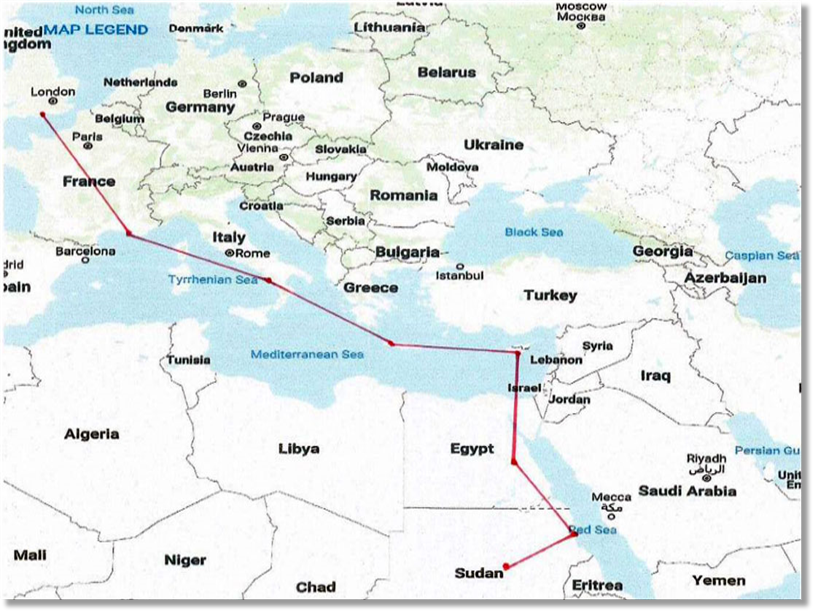
A four day journey from Thorney Island via Istres - Naples - Souda Bay - Akrotiri - Luxor - Port Sudan and finally Khartoum.
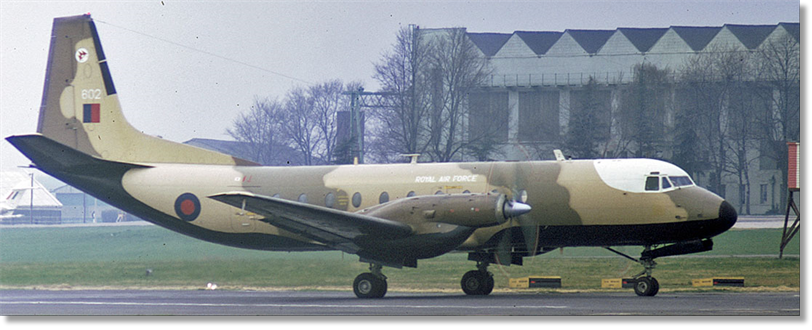
Andover C1 XS602 Of 46 Squadron – RAF Thorney Island 1974
Khartoum is a shared airfield with both a civil and military side and the Sudanese military officials were very friendly. We were taken downtown and shown a six storey block of flats on No 9 Street which was to become our operating base.
As time progressed each floor was designated for a different use. Domestic for our use, another domestic floor for use by the Army for R&R once we started rotating in earnest. A radio room and admin office, storage floor, a floor for catering and one for junk.
As time progressed each floor was designated for a different use. Domestic for our use, another domestic floor for use by the Army for R&R once we started rotating in earnest. A radio room and admin office, storage floor, a floor for catering and one for junk.
Our detachment would increase with the addition of four Army, a cook (Catering Corps), a signaller (R Sigs) and two local resources (RAOC), the latter buying all fresh rations and material required by the Engineers.
Day two saw us back at the airfield and a start to sorting out our equipment and the aircraft. There was quite a lot to be done and the Techies were “beavering away” and we felt a bit out of it.
I asked the chief tech if there was anything we could do to help but he thought there was nothing we could do being non-tech!
I asked him what tasks he had to do and one was the re-role of the aircraft from Bev seats to side para. I said we could do that for him and I was rewarded with a stare!
I told him the re-role would be easy and I was familiar with the net seats as they were the same as used on the Beverley and Argosy. He was so used to dealing with station movers at Thorney Island that he couldn’t comprehend the extra training and talents a MAMS team possessed!
Day two saw us back at the airfield and a start to sorting out our equipment and the aircraft. There was quite a lot to be done and the Techies were “beavering away” and we felt a bit out of it.
I asked the chief tech if there was anything we could do to help but he thought there was nothing we could do being non-tech!
I asked him what tasks he had to do and one was the re-role of the aircraft from Bev seats to side para. I said we could do that for him and I was rewarded with a stare!
I told him the re-role would be easy and I was familiar with the net seats as they were the same as used on the Beverley and Argosy. He was so used to dealing with station movers at Thorney Island that he couldn’t comprehend the extra training and talents a MAMS team possessed!
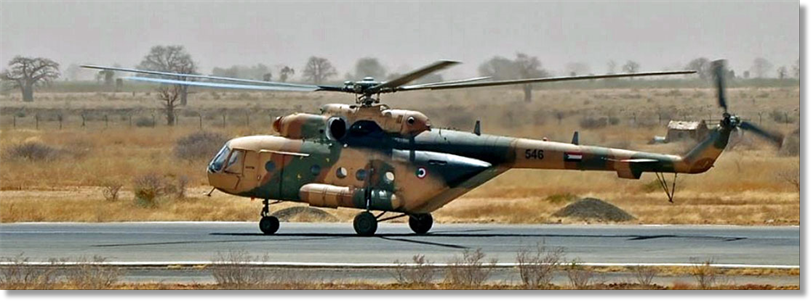
MIL8 (Hip) Helicopter of the Sudanese Air Force
We were operating from the Sudanese Air Force part of the Airfield. From the Airfield they were operating AN24 (Coke) twin engined freighters and MIL8 (Hip) helicopters. There was also a hangar containing a couple of old Pembroke’s and some dust covered Jet provosts, all non-airworthy. The Soviet built aircraft were being maintained and serviced by Russian Air Force personnel, who were all dressed in the Cuban garb of drab olive jackets and trousers and white soft caps. This situation was at times amusing as we couldn’t fraternise or speak and each seemed to ignore each other.
Day three and we were ready to make our first trip with supplies to Wau. Wau is some 625 miles South of Khartoum and on average it took just under three hours to get there. Tonj is south west of Wau Rough landing strip Wau Southern Sudan The airstrip itself was just hard packed dirt and the runway edges were marked with white painted stones. The Royal engineers were actually based at a town called Tonj, some 60 miles away. They always sent a couple of trucks and landrovers to meet us and collect what we had brought. This soon became a routine and we flew every other day.
Day three and we were ready to make our first trip with supplies to Wau. Wau is some 625 miles South of Khartoum and on average it took just under three hours to get there. Tonj is south west of Wau Rough landing strip Wau Southern Sudan The airstrip itself was just hard packed dirt and the runway edges were marked with white painted stones. The Royal engineers were actually based at a town called Tonj, some 60 miles away. They always sent a couple of trucks and landrovers to meet us and collect what we had brought. This soon became a routine and we flew every other day.
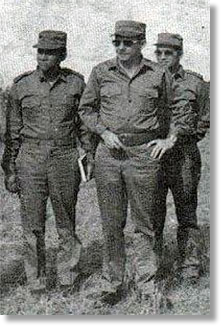
Cuban-style uniform
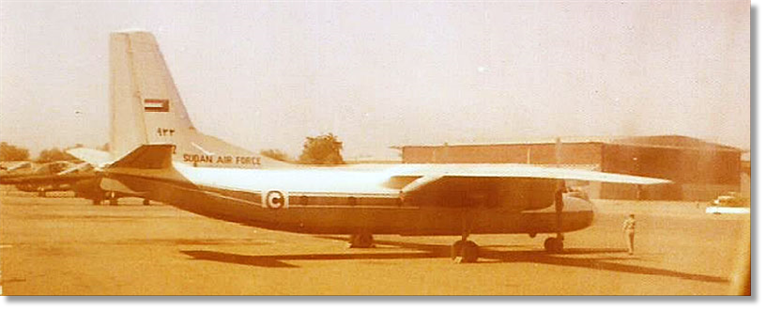
Antonov 24 (Coke) of the Sudanese Air Force Khartoum 1974
That broke the ice and we re-roled the aircraft. What made me chuckle was that once we had finished in just over two hours he presented me with a Job Card and said, "Make it out for 3 hours each as that is the going rate!” After that we got involved in many areas of work and again as the detachment developed we would assist with the refuelling and in any areas we could help.
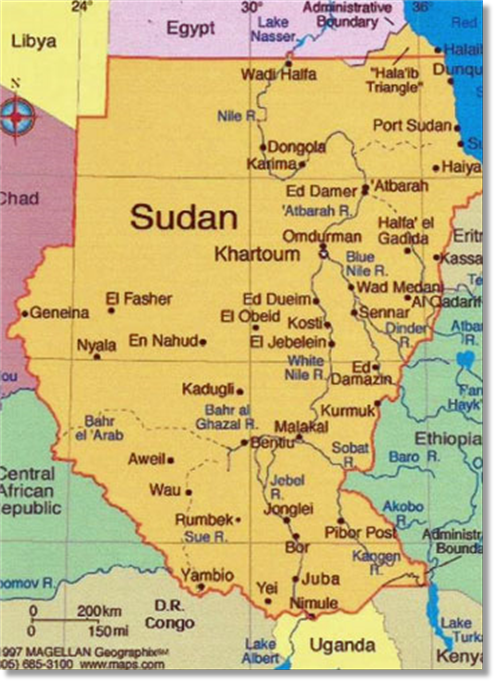
Tonj is south west of Wau
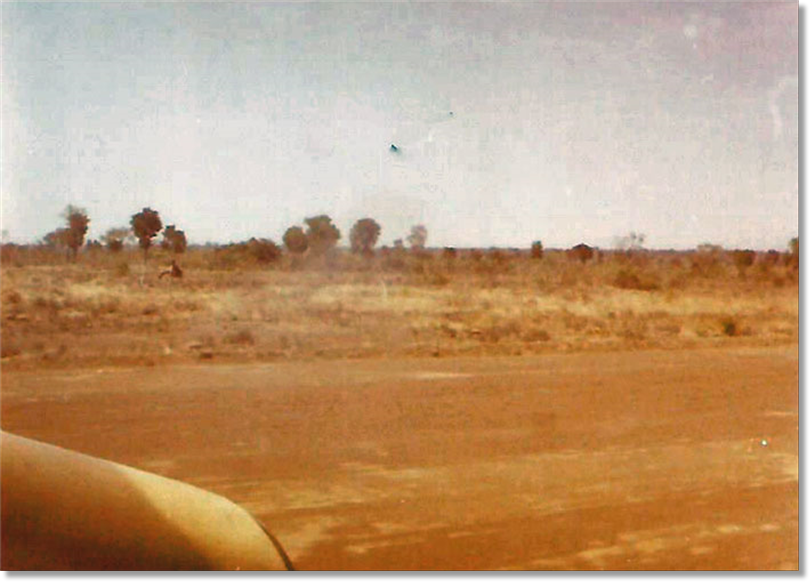
Rough landing strip Wau, Southern Sudan
Watch for Part II of Ian's Sudanese adventure next month

From: Allan Walker, Burnley, Lancashire
Subject: Lockdown Special VIII - Pandemic Stories
Hello Tony,
The only pandemic story that I have is that both myself and Barbara have had both Pfizer vaccinations. The first on 16 December and the second on 17 January. We are in a very high risk area and count ourselves very luckty to have had both.
I had contemplated volunteering as a helper in the Vaccination Centre but decided that it might not be the best thing as I am now 81. We have both been in lockdown for some time now and managing well.
One of our neighbours has offered to do any shopping that we may require but so far we have not taken that up. If needs must we will do. Must admit though they cannot help with the hairdressers a as my hair is getting longer once more.
I trust that all is well with you and your family. Love your story re mince pies.
Best wishes to all Movers wherever they may be.
Yours aye
Allan
Subject: Lockdown Special VIII - Pandemic Stories
Hello Tony,
The only pandemic story that I have is that both myself and Barbara have had both Pfizer vaccinations. The first on 16 December and the second on 17 January. We are in a very high risk area and count ourselves very luckty to have had both.
I had contemplated volunteering as a helper in the Vaccination Centre but decided that it might not be the best thing as I am now 81. We have both been in lockdown for some time now and managing well.
One of our neighbours has offered to do any shopping that we may require but so far we have not taken that up. If needs must we will do. Must admit though they cannot help with the hairdressers a as my hair is getting longer once more.
I trust that all is well with you and your family. Love your story re mince pies.
Best wishes to all Movers wherever they may be.
Yours aye
Allan

From: Don Hatton, Liscomb, NS
Subject: Lockdown Special VIII - Pandemic Stories
Hi Tony,
With travel restrictions and limited contact with the outside world, it’s kinda difficult to come up with interesting and variable stories. We live in a small fishing village where helping one another is a way of life here.
Where we live, at the end of a "pulp" road on Pye’s Head, Fern and I normally have the "Head" to ourselves during the winter months while the other four households snowbird it to Florida or Newfoundland, yep, Newfoundland!
So, what we’re doing is taking turns hosting dinner parties, and impromptu beer calls; we’re in our own unique bubble. We try to have an ethnic theme to these dinners. We’ve had a Canadian Thanksgiving as well as an American Thanksgiving, to appease the snowbirds that rightfully stayed home.
Our last dinner was based on Mi'kmaq traditions where the bounties of the wild are shared among their community; this dinner was moose meat, fox berries, mince deer meat tarts, homemade wild black berry wine and wild rose hips.
A German night is planned with roulladen, red cabbage and spatzele. A Newfie night with salt meat and cabbage, roast of moose meat with Newfie style gravy, boiled vegetables, peas pudding and figgy duff. An Italian night - pasta, of course! Then a down-home night with baked beans, fish cakes, blueberry grunt and maybe some black rum; etc. The beer call theme is just plain military tradition. Not much change there, the wife still drives me home!
These evenings are among siblings and cousins, you can pick your friends but not your relatives. I would send pictures but they could be incriminating. Keeping isolated, restricting our travel, practicing Covid-19 protocol has kept us Covid-19 free thus far.
Stay safe, be kind and pray for a speedy and safe ending to this pandemic.
Don and Fern
Subject: Lockdown Special VIII - Pandemic Stories
Hi Tony,
With travel restrictions and limited contact with the outside world, it’s kinda difficult to come up with interesting and variable stories. We live in a small fishing village where helping one another is a way of life here.
Where we live, at the end of a "pulp" road on Pye’s Head, Fern and I normally have the "Head" to ourselves during the winter months while the other four households snowbird it to Florida or Newfoundland, yep, Newfoundland!
So, what we’re doing is taking turns hosting dinner parties, and impromptu beer calls; we’re in our own unique bubble. We try to have an ethnic theme to these dinners. We’ve had a Canadian Thanksgiving as well as an American Thanksgiving, to appease the snowbirds that rightfully stayed home.
Our last dinner was based on Mi'kmaq traditions where the bounties of the wild are shared among their community; this dinner was moose meat, fox berries, mince deer meat tarts, homemade wild black berry wine and wild rose hips.
A German night is planned with roulladen, red cabbage and spatzele. A Newfie night with salt meat and cabbage, roast of moose meat with Newfie style gravy, boiled vegetables, peas pudding and figgy duff. An Italian night - pasta, of course! Then a down-home night with baked beans, fish cakes, blueberry grunt and maybe some black rum; etc. The beer call theme is just plain military tradition. Not much change there, the wife still drives me home!
These evenings are among siblings and cousins, you can pick your friends but not your relatives. I would send pictures but they could be incriminating. Keeping isolated, restricting our travel, practicing Covid-19 protocol has kept us Covid-19 free thus far.
Stay safe, be kind and pray for a speedy and safe ending to this pandemic.
Don and Fern

A Mi'kmaq Pow Wow in Nova Scotia

Video - Around Akrotiri in Cyprus

From: Keri Eynon, Thatcham, Berks
Subject: Lockdown Special VIII - Pandemic Stories
Hi Tony,
The pandemic has certainly made an impact on people's lives, yet at the same time for some, there is only a slight change to their lives. For instance, I am still extremely busy with funerals, the only major changes being whether or not to meet with families before the service or to do planning by phone, email or Zoom meeting. There is the limitation on numbers attending the service at the crematorium at present in our area that is a maximum of 30. It also means there is no physical contact with family even if you know them well and feel like "putting a comforting arm round them". There is also a ban on singing at the service but downloads of choirs singing hymns etc., are allowed, otherwise funerals follow the "normal pattern".
Regarding help, thankfully my wife, Mary, is a volunteer driver with the volunteer bureau in Thatcham and still takes people to various hospital appointments and now is in more demand to take people for their "jab" at Newbury Race Course. Regarding "jabs" all being well we should get ours in the next few weeks.
Our only real change has been in not visiting friends and family (grandchildren at Christmas etc), not going out for meals or being able to go into a cafe for a piece of cake and a coffee. There has also been the lack of going to church with them being open briefly round Christmas time but now closed although there are services by Zoom or pre-recorded on YouTube.
Otherwise, we carry on much as before within the restrictions laid down. We really feel for people whose whole lives have been completely altered; we can still get out for exercise, to go shopping, and as said carry on with funerals and volunteer driving.
Here's hoping that the vaccinations will go ahead as planned and that we can in the summer begin to get back to some sort of normality in our lives.
To everyone, stay safe and well.
Keri (Taff) Eynon
Subject: Lockdown Special VIII - Pandemic Stories
Hi Tony,
The pandemic has certainly made an impact on people's lives, yet at the same time for some, there is only a slight change to their lives. For instance, I am still extremely busy with funerals, the only major changes being whether or not to meet with families before the service or to do planning by phone, email or Zoom meeting. There is the limitation on numbers attending the service at the crematorium at present in our area that is a maximum of 30. It also means there is no physical contact with family even if you know them well and feel like "putting a comforting arm round them". There is also a ban on singing at the service but downloads of choirs singing hymns etc., are allowed, otherwise funerals follow the "normal pattern".
Regarding help, thankfully my wife, Mary, is a volunteer driver with the volunteer bureau in Thatcham and still takes people to various hospital appointments and now is in more demand to take people for their "jab" at Newbury Race Course. Regarding "jabs" all being well we should get ours in the next few weeks.
Our only real change has been in not visiting friends and family (grandchildren at Christmas etc), not going out for meals or being able to go into a cafe for a piece of cake and a coffee. There has also been the lack of going to church with them being open briefly round Christmas time but now closed although there are services by Zoom or pre-recorded on YouTube.
Otherwise, we carry on much as before within the restrictions laid down. We really feel for people whose whole lives have been completely altered; we can still get out for exercise, to go shopping, and as said carry on with funerals and volunteer driving.
Here's hoping that the vaccinations will go ahead as planned and that we can in the summer begin to get back to some sort of normality in our lives.
To everyone, stay safe and well.
Keri (Taff) Eynon

From: John Guy, Northampton
Subject: The Eagle
The late Dave Barton's 2002 request for information (OBB #102502) regarding the wooden carving of an eagle on display in the Sergeants' Mess, RAF Gatow (Berlin), which I believe was hand-carved by a POW, reminded me of the following:
During my posting May '79 – May '82 the then Station Commander was never shy in stating that the carving was of such beauty that it really should be on display in the Officers' Mess. I was CMC the Sergeants' Mess come the time of his posting back to the UK and we dined him out. He requested that the lighting display be switched off over the carving. This was agreed in respect of his concern over its ownership.
On the day he rang me a few times to ask if all was in order reference the dining out. Rather concerned, I visited the mess and was subsequently informed by the mess manager that all was in order. Later that evening, the Station Commander and I were alone in the anti-room prior to being seated when he put his arm around my shoulders and enquired if all was well. I responded by asking, "Why, what have you been up to?"
Speeches over, our guest, as a final gesture, asked for the eagle display light to be switched on. This done, imagine everyone's surprise to see the eagle clad in a very small Group Captain's hat. It came to pass that he had ordered a young supply officer to break into the mess to achieve this and once and for all prove that the eagle really belonged in the Officers' Mess!
My committee, mostly policemen, wanted quick revenge, but their suggestion frightened me to death. I pictured myself in his office the following morning trying to explain away the reason for damage to SHQ, and more to the point his office door. Actually they assured me that as policemen there would not be a problem! The SWO was asked if the Group Captain had anything on his desk, or in his office which was very personal to him?
In the interim, how I managed to keep the Group Captain away from the bar area is now completely beyond me. However, eventually I said to him, having been here on many occasions, "Is there anything different to be observed?" He looked around and then there was a gasp! "How long have you had that?" pointing to a beautiful pen, pencil and ink set behind the bar.
Finally, on departure from the Mess, he said to me "I didn’t think for one moment that you would let my little prank go without revenge! The surprise was the speed with which it had been achieved!" I was very relieved not to be presented with Brenda, my wife, rolled up in a carpet!
Finally, on my departure in May '82, the eagle was still residing in the Sergeants' Mess, RAF Gatow.
Subject: The Eagle
The late Dave Barton's 2002 request for information (OBB #102502) regarding the wooden carving of an eagle on display in the Sergeants' Mess, RAF Gatow (Berlin), which I believe was hand-carved by a POW, reminded me of the following:
During my posting May '79 – May '82 the then Station Commander was never shy in stating that the carving was of such beauty that it really should be on display in the Officers' Mess. I was CMC the Sergeants' Mess come the time of his posting back to the UK and we dined him out. He requested that the lighting display be switched off over the carving. This was agreed in respect of his concern over its ownership.
On the day he rang me a few times to ask if all was in order reference the dining out. Rather concerned, I visited the mess and was subsequently informed by the mess manager that all was in order. Later that evening, the Station Commander and I were alone in the anti-room prior to being seated when he put his arm around my shoulders and enquired if all was well. I responded by asking, "Why, what have you been up to?"
Speeches over, our guest, as a final gesture, asked for the eagle display light to be switched on. This done, imagine everyone's surprise to see the eagle clad in a very small Group Captain's hat. It came to pass that he had ordered a young supply officer to break into the mess to achieve this and once and for all prove that the eagle really belonged in the Officers' Mess!
My committee, mostly policemen, wanted quick revenge, but their suggestion frightened me to death. I pictured myself in his office the following morning trying to explain away the reason for damage to SHQ, and more to the point his office door. Actually they assured me that as policemen there would not be a problem! The SWO was asked if the Group Captain had anything on his desk, or in his office which was very personal to him?
In the interim, how I managed to keep the Group Captain away from the bar area is now completely beyond me. However, eventually I said to him, having been here on many occasions, "Is there anything different to be observed?" He looked around and then there was a gasp! "How long have you had that?" pointing to a beautiful pen, pencil and ink set behind the bar.
Finally, on departure from the Mess, he said to me "I didn’t think for one moment that you would let my little prank go without revenge! The surprise was the speed with which it had been achieved!" I was very relieved not to be presented with Brenda, my wife, rolled up in a carpet!
Finally, on my departure in May '82, the eagle was still residing in the Sergeants' Mess, RAF Gatow.
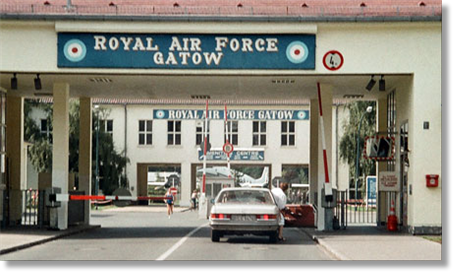
The main gate of RAF Gatow in August 1983

From: Ian Envis, Crowborough, East Sussex
Subject: Mark Attrill - Special Mention
Subject: Mark Attrill - Special Mention
Mark Attrill - our Man in Estonia
On Monday 01 February 2021, Mark will finally retire from the RAF and settle in Estonia where he will be a lecturer at their Defence Academy. Why the importance? Mark will have served continuously for 41 years and has spent the last 15 years in numerous NATO appointments, latterly in Estonia.
I think 41 years of active service deserves a mention and I'm sure a large number of UKMAMS and Movers will know Mark or will have worked with him and would like to wish him a "fare thee well" as he sails into retirement!
Ciao,
Ian Envis
(UKMAMS Delta Team - 1974-1976)
I think 41 years of active service deserves a mention and I'm sure a large number of UKMAMS and Movers will know Mark or will have worked with him and would like to wish him a "fare thee well" as he sails into retirement!
Ciao,
Ian Envis
(UKMAMS Delta Team - 1974-1976)
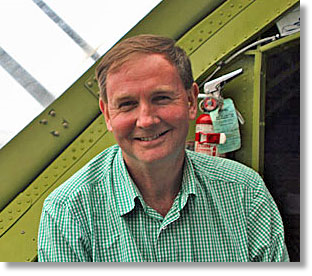
Mark Attrill - 41 years man and boy
The Misadventures of Jarvo
Episode 6: It all goes wrong for Jarvo in Accra
Still in Accra, Ghana 18 October 2006
Just when I thought everything was in place and ready to go, at the last moment the Chief of Ghana Police decided to throw a major spanner in the works. He called me and told me, extremely politely by the way, they would have to delay the first aircraft by twenty four hours. Cancelling what was left of my internal monologue, I explained in a stream of expletives, not very politely by the way, that there would be no delay to the sodding aircraft. It appeared that the handling agent wanted the baggage at two o clock in the afternoon in order to build the aircraft pallets, which was a difficult timescale for the policemen to achieve so they had been advised by the agent to delay things. Why the idiots wanted the bags so early was beyond me. So a swift phone call to the Handling Agent with graphic details on how I intended to deal with the situation when I found him and the time was hurriedly amended to 2300 and we were thankfully back on track.
Francis sent a squad car to pick me up and we headed for the airport, blue light flashing, yet again in driving rain. The handling agent was slightly grumpy but the baggage pallet building seemed to be progressing OK so Francis and I left them to it and swung by the terminal to wait for the arrival of the Ukrainian crew.
There were fifteen of them and they stumbled and tumbled out of the bus and stood disorientated and dishevelled on the pavement. I asked for Victor the Captain and got directed to an older looking guy smelling of something indefinable but I’ll plumb for urine for the sake of description. The rest of the crew stank of booze, rough cigarettes and cheap aftershave and that was just the women. In fact it was only because they were wearing skirts that I realised there were women in amongst them. Despite my best efforts and increasing volume, I was unable to overcome the language barrier with Victor so I wrote 0230 on a piece of paper and performed a classic mime in three parts of being a passenger; he seemed to be content with this. However, after overcoming a major fiasco at security and another horrendous faff with those cursed insurance forms, we found ourselves sitting around for hours watching the crew appearing to do precisely cock-all at the aircraft. It was five thirty when we eventually got the go ahead from them to start boarding the passengers; Victor obviously wasn’t content with my mime skills. After it finally creaked into the air I gave the handling agent another verbal kicking for the inordinate amount of time it had taken to get the aircraft fuelled and loaded.
Francis sent a squad car to pick me up and we headed for the airport, blue light flashing, yet again in driving rain. The handling agent was slightly grumpy but the baggage pallet building seemed to be progressing OK so Francis and I left them to it and swung by the terminal to wait for the arrival of the Ukrainian crew.
There were fifteen of them and they stumbled and tumbled out of the bus and stood disorientated and dishevelled on the pavement. I asked for Victor the Captain and got directed to an older looking guy smelling of something indefinable but I’ll plumb for urine for the sake of description. The rest of the crew stank of booze, rough cigarettes and cheap aftershave and that was just the women. In fact it was only because they were wearing skirts that I realised there were women in amongst them. Despite my best efforts and increasing volume, I was unable to overcome the language barrier with Victor so I wrote 0230 on a piece of paper and performed a classic mime in three parts of being a passenger; he seemed to be content with this. However, after overcoming a major fiasco at security and another horrendous faff with those cursed insurance forms, we found ourselves sitting around for hours watching the crew appearing to do precisely cock-all at the aircraft. It was five thirty when we eventually got the go ahead from them to start boarding the passengers; Victor obviously wasn’t content with my mime skills. After it finally creaked into the air I gave the handling agent another verbal kicking for the inordinate amount of time it had taken to get the aircraft fuelled and loaded.
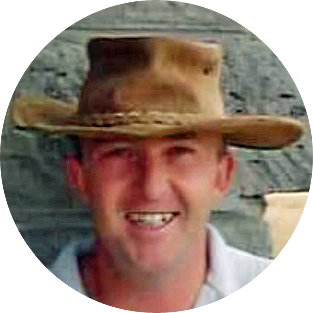
Handling agents are generally a strange breed and like to decide their own priorities. They are not renowned for their flexibility should an aircraft be delayed which, when handling RAF aircraft is tragically a fairly regular occurrence. Sometimes you have to be flexible the other way and try and time the arrival of your aircraft when they have a slacker period so you can be sure of getting the equipment you need. In Sri Lanka I had to plan an aircraft flow around cricket matches as almost the entire airport staff would be wedged into one of the departure lounges watching the game on a tiny TV and would not be budged.
My sole experience of working with Russians before running into Victor and his crew had been my Colonel Team Leader in Sierra Leone. He had a problem with drink. The problem arose when he couldn’t get any. Many were the nights when I had to cut him out of his mosquito net before he hung himself. He would then sit on his bed and launch into a very weepy morose medley of songs from the steppes until he finally passed out. He terrified the Africans on the team; I think it was the size of his moustache which I suspected was where he hid his vodka supplies. He would regularly shamble into my office and proceed to get himself stuck on the strip of fly paper hanging in what everyone else considered an out of the way place.
The last vestige of respect for him disappeared when we did a patrol to the border with Guinea to a place called Gbongokoro on the river Meli. To get to the Police post at the border involved a dodgy but not impossible walk from where we could park across suspended logs over the river. He didn’t make it. I carried a change of clothes in my escape kit... he didn’t. Christ he stank, all the rest of the patrol then crammed in my vehicle to get away from him. He certainly kept the flies away from us though.
At least Victor was on his way to Darfur at last so I could grab some sleep. However, my head had barely touched the pillow when I started to get phone calls from every man and his dog. This harassment continued throughout the morning until sleep deprivation began to seriously kick in. It transpired that the aircraft had arrived in Darfur only to find that the anticipated ninety four returning passengers were nowhere to be found. Apparently there wasn’t any fuel available for the helicopters to bring them from their bases around Darfur to El Fashir Airport. Therefore, the aircraft had returned to Accra infuriatingly empty.
I was now in a bit of a pickle as we only had two remaining flights scheduled to bring back two hundred and eighty people which would require the aircraft to refuel twice on route due to the payload limitations. I hated the thought of adding extra stops. A newly negotiated schedule gave us a six o clock takeoff from Accra the next morning so I grabbed a wonderful four hours kip and the next morning plonked myself down outside the hotel to wait for the police car booked for three thirty. Bang on five thirty it arrived.
My sole experience of working with Russians before running into Victor and his crew had been my Colonel Team Leader in Sierra Leone. He had a problem with drink. The problem arose when he couldn’t get any. Many were the nights when I had to cut him out of his mosquito net before he hung himself. He would then sit on his bed and launch into a very weepy morose medley of songs from the steppes until he finally passed out. He terrified the Africans on the team; I think it was the size of his moustache which I suspected was where he hid his vodka supplies. He would regularly shamble into my office and proceed to get himself stuck on the strip of fly paper hanging in what everyone else considered an out of the way place.
The last vestige of respect for him disappeared when we did a patrol to the border with Guinea to a place called Gbongokoro on the river Meli. To get to the Police post at the border involved a dodgy but not impossible walk from where we could park across suspended logs over the river. He didn’t make it. I carried a change of clothes in my escape kit... he didn’t. Christ he stank, all the rest of the patrol then crammed in my vehicle to get away from him. He certainly kept the flies away from us though.
At least Victor was on his way to Darfur at last so I could grab some sleep. However, my head had barely touched the pillow when I started to get phone calls from every man and his dog. This harassment continued throughout the morning until sleep deprivation began to seriously kick in. It transpired that the aircraft had arrived in Darfur only to find that the anticipated ninety four returning passengers were nowhere to be found. Apparently there wasn’t any fuel available for the helicopters to bring them from their bases around Darfur to El Fashir Airport. Therefore, the aircraft had returned to Accra infuriatingly empty.
I was now in a bit of a pickle as we only had two remaining flights scheduled to bring back two hundred and eighty people which would require the aircraft to refuel twice on route due to the payload limitations. I hated the thought of adding extra stops. A newly negotiated schedule gave us a six o clock takeoff from Accra the next morning so I grabbed a wonderful four hours kip and the next morning plonked myself down outside the hotel to wait for the police car booked for three thirty. Bang on five thirty it arrived.
The airport was chaos, with passengers arriving piecemeal due to the changes to the schedule. We eventually got everyone together and sorted out but as a result we were horrendously late through immigration, two hours in fact, only to then find that the crew hadn’t even arrived. I phoned Rafa to let him know about the delay and he told me that the flight had been delayed by twenty four hours to allow the police at the other end some time to get to El Fashir. Thanks for telling me you Spanish git, unbelievable, we had speaking regularly on the phone so it must have occurred to him before to mention this minor matter.
I then bumped into Victor, the aircraft Captain; he breathtakingly mimed that he was ready to fly; I was jealous...what skill. Nobody had told him about the delay as well. He introduced me to his co-pilot, I think, who’s only English word was “MANIFEST” bellowed very loudly. I bellowed “PISS OFF” back at him and he shambled away satisfied. I suggested to Victor in a long winded mime, clearly amateur by his epic standards, that he called his company to check on the twenty four hour delay which he seemed to understand. I then had to shuffle from foot to foot with embarrassment as the Chief of Police explained to his passengers that they would not be flying that day after nearly seven hours of hanging around….welcome to my world and thanks again Rafa. I rescheduled the whole debacle for three o clock the following morning and stomped off, eyes boring into the back of my head.
Francis had now been awake for the best part of forty eight hours but was still irritatingly jolly although for some reason he insisted on calling me Derek and hugging me a lot. As I attempted to get some rest, do some laundry and smooch on the Internet with Karen, I was almost constantly harangued on the phone by a woman at the Ukrainian Cargo Airways head office. She told me that Victor was at the airport and was having trouble making himself understood to the handling agents. I was requested to go to the aircraft to attempt to translate. Poor Francis took me back to the airport where the Co-Pilot bellowed “MANIFEST” at me again. “He wants a manifest” I told the handling agent and everything was sorted out. With a cheery “PISS OFF” in the direction of the Co-Pilot, I headed back to the hotel for a well earned Star beer, a cheeky frog giblet casserole and some vital mime practice (just the basics, Knife and Fork, Bill please etc etc).
I had just finished slurping and nibbling on a rather succulent frog head when the phone rang and bugger me, the schedule had been changed yet again. We would now do the flights on Saturday and Sunday, thank god, I could now get some proper sleep at last. I phoned Francis and could almost hear the poor man actually wilt even further. It then occurred to me that Victor wasn’t miming that he was ready to fly at all but something far scarier; thank god we didn’t go for it that night.
Another delay to the plan meant more hard work for poor Francis on top of his normal day job as the Police Protocol Officer but translated into a nice few days holiday for young Jarvo. I took advantage of the break to head for the High Commission to replenish my dwindling supply of dollars ready for Rwanda and to get some shopping done in downtown Accra. Crossing the road and nimbly dodging the ubiquitous motorbikes I remembered my own experiences on two wheels.
I then bumped into Victor, the aircraft Captain; he breathtakingly mimed that he was ready to fly; I was jealous...what skill. Nobody had told him about the delay as well. He introduced me to his co-pilot, I think, who’s only English word was “MANIFEST” bellowed very loudly. I bellowed “PISS OFF” back at him and he shambled away satisfied. I suggested to Victor in a long winded mime, clearly amateur by his epic standards, that he called his company to check on the twenty four hour delay which he seemed to understand. I then had to shuffle from foot to foot with embarrassment as the Chief of Police explained to his passengers that they would not be flying that day after nearly seven hours of hanging around….welcome to my world and thanks again Rafa. I rescheduled the whole debacle for three o clock the following morning and stomped off, eyes boring into the back of my head.
Francis had now been awake for the best part of forty eight hours but was still irritatingly jolly although for some reason he insisted on calling me Derek and hugging me a lot. As I attempted to get some rest, do some laundry and smooch on the Internet with Karen, I was almost constantly harangued on the phone by a woman at the Ukrainian Cargo Airways head office. She told me that Victor was at the airport and was having trouble making himself understood to the handling agents. I was requested to go to the aircraft to attempt to translate. Poor Francis took me back to the airport where the Co-Pilot bellowed “MANIFEST” at me again. “He wants a manifest” I told the handling agent and everything was sorted out. With a cheery “PISS OFF” in the direction of the Co-Pilot, I headed back to the hotel for a well earned Star beer, a cheeky frog giblet casserole and some vital mime practice (just the basics, Knife and Fork, Bill please etc etc).
I had just finished slurping and nibbling on a rather succulent frog head when the phone rang and bugger me, the schedule had been changed yet again. We would now do the flights on Saturday and Sunday, thank god, I could now get some proper sleep at last. I phoned Francis and could almost hear the poor man actually wilt even further. It then occurred to me that Victor wasn’t miming that he was ready to fly at all but something far scarier; thank god we didn’t go for it that night.
Another delay to the plan meant more hard work for poor Francis on top of his normal day job as the Police Protocol Officer but translated into a nice few days holiday for young Jarvo. I took advantage of the break to head for the High Commission to replenish my dwindling supply of dollars ready for Rwanda and to get some shopping done in downtown Accra. Crossing the road and nimbly dodging the ubiquitous motorbikes I remembered my own experiences on two wheels.
Whilst in the Army I did a three month job for NASA in the States measuring gravity. I know it sounds odd but gravity really is different everywhere and measuring the fluctuations can actually identify potential oil and gas deposits below ground. In this case however, the project was to enable the space shuttle to take off and land at Cape Canaveral instead of being piggy-backed on a B747 back from Texas.
The trip got off to a bad start thanks to the dreaded RAF, as we said at the time, “Time to spare, fly Crab Air”. The instrument we used to measure relative gravity, a gravimeter bizarrely, was extremely sensitive and required its own seat on an aircraft and had to travel in a specific direction on that seat. Our small team of six sat in the terminal at RAF Brize Norton wondering why we were delayed when a voice came over the public address, “Apologies for the delay ladies and gentlemen but we are awaiting the arrival of a certain passenger, if a Mr G Ravimeter is in the terminal please make yourself known to the movements staff”.
Whilst in the States and blessed with a long weekend off, Jim Wallis and I decided to go to New Orleans from Gainesville in Florida (for the benefit of English people) where we were based on Jim’s 1966 ex-police Harley Davidson which he had bought for a run-around. This was a twelve hundred mile round trip on a bike with one seat and a tendency to dump five litres of oil almost without warning. It had a major attitude problem in my opinion. Every hundred miles or so when we stopped to fill up the oil, I had to be prised off the back of the single seat with a shoe horn and was in some considerable pain by the time we reached New Orleans. Needless to say we had a fine old thirty six hours in a place I could only describe as Disney World for adults. The journey home however was more difficult. Cruising through Alabama late at night in a fog bank that hung at head height above the road, the bike started to misfire. Jim shouted back to me that we were almost out of fuel; I said we should switch to the reserve tank to which he replied he already had a way back. We coasted gently and silently to a halt alongside a pickup that was rocking furiously back and forth with the windows steamed up and being English and blissfully unaware of the dangers attached to disturbing a shagging redneck, tapped politely on the window. As the occupants had been completely unaware of our stealthy approach they were somewhat surprised to be interrupted. I think ‘caught with their pants down’ is the expression. Introductions over, they were able to point us to a gas station five hundred yards further on down the road.
It was closed. Fortunately for us, it was opposite a motel and being knackered, cold and without means of transport unless we pushed the bike, we decided to check it out. It looked closed as well but hanging on the night bell brought a sleepy looking Indian (not North American Indian, the other one) to the door. He had a room available, checked us in and then said “Are you from England?” “Yes” we said “From London” as that was the only place most Americans knew. “I am also from London” he trilled “I am from Greenwitch”. We spent a relaxing late evening watching ‘The Long Good Friday’ in black and white and then the next morning refuelled and refreshed we set off back to Gainesville.
The trip got off to a bad start thanks to the dreaded RAF, as we said at the time, “Time to spare, fly Crab Air”. The instrument we used to measure relative gravity, a gravimeter bizarrely, was extremely sensitive and required its own seat on an aircraft and had to travel in a specific direction on that seat. Our small team of six sat in the terminal at RAF Brize Norton wondering why we were delayed when a voice came over the public address, “Apologies for the delay ladies and gentlemen but we are awaiting the arrival of a certain passenger, if a Mr G Ravimeter is in the terminal please make yourself known to the movements staff”.
Whilst in the States and blessed with a long weekend off, Jim Wallis and I decided to go to New Orleans from Gainesville in Florida (for the benefit of English people) where we were based on Jim’s 1966 ex-police Harley Davidson which he had bought for a run-around. This was a twelve hundred mile round trip on a bike with one seat and a tendency to dump five litres of oil almost without warning. It had a major attitude problem in my opinion. Every hundred miles or so when we stopped to fill up the oil, I had to be prised off the back of the single seat with a shoe horn and was in some considerable pain by the time we reached New Orleans. Needless to say we had a fine old thirty six hours in a place I could only describe as Disney World for adults. The journey home however was more difficult. Cruising through Alabama late at night in a fog bank that hung at head height above the road, the bike started to misfire. Jim shouted back to me that we were almost out of fuel; I said we should switch to the reserve tank to which he replied he already had a way back. We coasted gently and silently to a halt alongside a pickup that was rocking furiously back and forth with the windows steamed up and being English and blissfully unaware of the dangers attached to disturbing a shagging redneck, tapped politely on the window. As the occupants had been completely unaware of our stealthy approach they were somewhat surprised to be interrupted. I think ‘caught with their pants down’ is the expression. Introductions over, they were able to point us to a gas station five hundred yards further on down the road.
It was closed. Fortunately for us, it was opposite a motel and being knackered, cold and without means of transport unless we pushed the bike, we decided to check it out. It looked closed as well but hanging on the night bell brought a sleepy looking Indian (not North American Indian, the other one) to the door. He had a room available, checked us in and then said “Are you from England?” “Yes” we said “From London” as that was the only place most Americans knew. “I am also from London” he trilled “I am from Greenwitch”. We spent a relaxing late evening watching ‘The Long Good Friday’ in black and white and then the next morning refuelled and refreshed we set off back to Gainesville.
After a fruitless search around Accra for deodorant, what was I bloody thinking, I called it quits and headed home. I was just settling down for a quiet beer in the bar when that damn Ukrainian woman was on the phone again. She wanted me to explain something to Victor the next morning which I realised would be pointless and time consuming to do verbally so I asked her for an email. I had some juicy peppered testicles for dinner, switched the phone off and went to bed.
The passengers were waiting patiently at departures when I screeched up to the doors in the squad car the next morning. Their passports, once stamped in bulk at immigration, had to be returned to them and Francis and his secretary Mary were calling out their names. Mary was the quietest most unassuming woman I had ever met and spoke in barely a whisper until she got to call out the names when she became a veritable foghorn. Francis foolishly asked me to assist so I grabbed a pile of passports and got to work. The first one was easy, David Asantey. However the next one was Olomafu, Ofebabaguuiessty or something like that only with more vowels and I hashed it up completely. The passengers were having convulsions of laughter and rolling around on the floor so I was relieved of my duties and told to stand in the corner. When I opened a classroom I had funded in Olepolus, Kenya, I decided to do the speech in the Masai language for the benefit of the locals. My friend Mark Senteu, a Masai himself, had kindly translated it for me but most of what I said was still drowned out by hysterical laughter. I should have learned my lesson from that.
Later as I attempted to deliver the email from the Ukraine and the flight documents to Victor I was brutally intercepted by a huge bear of a woman. She was insisting on getting the in-flight catering before the passengers could board the aircraft and kept shouting “CATERING” progressively louder and louder and then pointed at me. I was bemused as I had seen the food being loaded about thirty minutes previously. It turned out that her name was Katrina and she was just being friendly and introducing herself. The passengers were all safely on board, everything appeared to be sorted and we were just about to pull the steps away when Katrina appeared in the aircraft doorway and roared at me to come back on the aircraft. There was a passenger asking for something and they were in a complete panic as they couldn’t understand what he wanted. I asked him what’s up, “I need to urinate Sir” he said hopping from foot to foot. “TOILET” I screeched at Katrina and I saw the comprehension dawn on her face and it was relief all round.
I was getting myself ready for the return of the aircraft that afternoon when the phone of doom rang again. Despite the guarantees, there were still no passengers ready to go in Darfur and the Sudanese authorities had effectively grounded the aircraft forcing it to remain at El Fashir overnight. For a few fleeting moments I actually felt sorry for the Ukrainians as there was no Vodka to be had in El Fashir and not much in the way of creature comforts, especially for a pampered aircraft crew. I soon got over it as it meant I had an evening off. I was just starting to relax when Francis suddenly turned up and insisted on taking me out with Phillip and Mary. We headed off to a dodgy looking restaurant close to the airport and enjoyed Peppered fish and Banku eaten noisily with our fingers. Once again, most of it seemed to inexplicably migrate to my hair but the beer was coolish.
The passengers were waiting patiently at departures when I screeched up to the doors in the squad car the next morning. Their passports, once stamped in bulk at immigration, had to be returned to them and Francis and his secretary Mary were calling out their names. Mary was the quietest most unassuming woman I had ever met and spoke in barely a whisper until she got to call out the names when she became a veritable foghorn. Francis foolishly asked me to assist so I grabbed a pile of passports and got to work. The first one was easy, David Asantey. However the next one was Olomafu, Ofebabaguuiessty or something like that only with more vowels and I hashed it up completely. The passengers were having convulsions of laughter and rolling around on the floor so I was relieved of my duties and told to stand in the corner. When I opened a classroom I had funded in Olepolus, Kenya, I decided to do the speech in the Masai language for the benefit of the locals. My friend Mark Senteu, a Masai himself, had kindly translated it for me but most of what I said was still drowned out by hysterical laughter. I should have learned my lesson from that.
Later as I attempted to deliver the email from the Ukraine and the flight documents to Victor I was brutally intercepted by a huge bear of a woman. She was insisting on getting the in-flight catering before the passengers could board the aircraft and kept shouting “CATERING” progressively louder and louder and then pointed at me. I was bemused as I had seen the food being loaded about thirty minutes previously. It turned out that her name was Katrina and she was just being friendly and introducing herself. The passengers were all safely on board, everything appeared to be sorted and we were just about to pull the steps away when Katrina appeared in the aircraft doorway and roared at me to come back on the aircraft. There was a passenger asking for something and they were in a complete panic as they couldn’t understand what he wanted. I asked him what’s up, “I need to urinate Sir” he said hopping from foot to foot. “TOILET” I screeched at Katrina and I saw the comprehension dawn on her face and it was relief all round.
I was getting myself ready for the return of the aircraft that afternoon when the phone of doom rang again. Despite the guarantees, there were still no passengers ready to go in Darfur and the Sudanese authorities had effectively grounded the aircraft forcing it to remain at El Fashir overnight. For a few fleeting moments I actually felt sorry for the Ukrainians as there was no Vodka to be had in El Fashir and not much in the way of creature comforts, especially for a pampered aircraft crew. I soon got over it as it meant I had an evening off. I was just starting to relax when Francis suddenly turned up and insisted on taking me out with Phillip and Mary. We headed off to a dodgy looking restaurant close to the airport and enjoyed Peppered fish and Banku eaten noisily with our fingers. Once again, most of it seemed to inexplicably migrate to my hair but the beer was coolish.
We dropped Mary and Phillip off in town and steered the squad car off to a tribal gathering. What a hoot that was, lots of music, dancing and only one white fella, me. I got introduced to almost all of the five hundred or so who were there and warned about my upcoming speech, oh no, not again. I skilfully dodged my way out of that by feigning a phone call every time I was approached but I did end up semi-judging the children’s dancing competition. I had to indicate the rejects to whittle the numbers down, who were then dragged screaming away with their mothers scowling at me. Eventually I chose a small girl as the victor, who could have only been about four years old but obviously loved the music. She won an exercise book, two pens and a couple of pencils.
As night fell, scores of rather large bats filled the sky but the drums and dancing continued. Francis decided that we should make our excuses go to meet his cousin Mildred in the next village. With Mildred in tow we went on to a local hot spot for a quick shandy and Mildred, very much into the music that was playing, decided she wanted to have a dance. Francis and I suddenly got very tired and emotional and just didn’t want to dance so Mildred was bundled into the back of the Police car and I begged to be taken home. Back at the sanctuary of the Shangri La one of the waiters had bought me some pepper soup with goat meat that his wife had very thoughtfully made for me. It was absolutely superb and was joyfully mopped up with some crusty bread and due to a laundry debacle, spread all over my last remaining T-shirt. How kind of them was that, he wouldn’t take a cent for it either.
The next morning and the phone calls started early. In Darfur, the aircraft was approached by armed men, some in unidentified uniform, who started putting bags in the hold and on the seats inside. Victor and the rest of the crew were seriously spooked and decided to shut up the aircraft and run for Accra with no passengers on board but some two hundred bits of baggage scattered around. Francis was devastated when I told him especially when I mentioned that there was currently no recovery plan to get the rest of his people home. Darya from the Ukraine called me (we were now on first name terms having spoken so often) to get a copy of the guarantee that the passengers in El Fashir would be ready to fly. This was the first hint of an ‘arse covering’ exercise. I explained that the Police Chief gave me his word that he would ensure all the passengers flying from Accra would be ready to move and he had more than kept it. However, I was obviously powerless to influence the proceedings in Darfur. This was why I supposedly had a Liaison Officer in Addis. We had been ready to go every bloody morning.
With my clothes covered in peppered goat gravy I woofed down some breakfast and spent the next six hours in the hotel business centre cursing loudly to myself, throwing stuff around, staring at my laptop and waiting for a friggin bone to be thrown my way. Karen was thankfully able to keep me sane as the world fell apart around me, god I missed that woman. My evil twin Tel was also online and was safely ensconced back in the Continental hotel in Lagos. Ibadan must have been really crap if he felt safe in Lagos.
As night fell, scores of rather large bats filled the sky but the drums and dancing continued. Francis decided that we should make our excuses go to meet his cousin Mildred in the next village. With Mildred in tow we went on to a local hot spot for a quick shandy and Mildred, very much into the music that was playing, decided she wanted to have a dance. Francis and I suddenly got very tired and emotional and just didn’t want to dance so Mildred was bundled into the back of the Police car and I begged to be taken home. Back at the sanctuary of the Shangri La one of the waiters had bought me some pepper soup with goat meat that his wife had very thoughtfully made for me. It was absolutely superb and was joyfully mopped up with some crusty bread and due to a laundry debacle, spread all over my last remaining T-shirt. How kind of them was that, he wouldn’t take a cent for it either.
The next morning and the phone calls started early. In Darfur, the aircraft was approached by armed men, some in unidentified uniform, who started putting bags in the hold and on the seats inside. Victor and the rest of the crew were seriously spooked and decided to shut up the aircraft and run for Accra with no passengers on board but some two hundred bits of baggage scattered around. Francis was devastated when I told him especially when I mentioned that there was currently no recovery plan to get the rest of his people home. Darya from the Ukraine called me (we were now on first name terms having spoken so often) to get a copy of the guarantee that the passengers in El Fashir would be ready to fly. This was the first hint of an ‘arse covering’ exercise. I explained that the Police Chief gave me his word that he would ensure all the passengers flying from Accra would be ready to move and he had more than kept it. However, I was obviously powerless to influence the proceedings in Darfur. This was why I supposedly had a Liaison Officer in Addis. We had been ready to go every bloody morning.
With my clothes covered in peppered goat gravy I woofed down some breakfast and spent the next six hours in the hotel business centre cursing loudly to myself, throwing stuff around, staring at my laptop and waiting for a friggin bone to be thrown my way. Karen was thankfully able to keep me sane as the world fell apart around me, god I missed that woman. My evil twin Tel was also online and was safely ensconced back in the Continental hotel in Lagos. Ibadan must have been really crap if he felt safe in Lagos.
Two days passed by and still we hadn’t flown again. The previous afternoon I was summoned to the airport to unload the baggage which had been dumped on the aircraft at El Fashir before Victor fled. There were bags strewn everywhere and the crew told me that they had been overrun by people throwing bags in the hold and on all the seats upstairs some of whom were brandishing guns. I figured that they were probably right to cut and run under the circumstances, but now they wanted me to supply guarantees that the security situation at El Fashir had been sorted out. The crew were also insisting that I flew with them to sort out both ends; this would require me to carry a weapon. Francis offered me a variety of interesting ones but I hoped this was absolutely a last resort. In a final attempt to resolve all the problems and calm things down, I headed off to the crew hotel and sat and worked through their worries and demands, signing whatever they wanted. Now all we had to do was sit and wait. Their clearance to operate had to come from the Ukraine. I had already delayed my departure to Dakar by two days.
I was sitting in the business centre around seven o clock that evening, attempting to find out the estimated departure time when the handling agent called me, “Davis the crew are here and getting ready to leave”, he told me. Dumbstruck, confused and with the internal monologue raging away I racked my brain for ideas. Luckily Karen was still online and suggested that I go to the airport... brilliant why hadn’t that occurred to me, I must have been getting really tired. I called Francis who was rapidly perfecting his own internal monologue and asked him to come and get me ASAP.
Outside the hotel the highway was gridlocked by three lanes of traffic. The doorman asked me if I needed a taxi, “I think that’s my ride” I said as the police car screamed into the car park sirens on and lights flashing. It was the ride of a lifetime to the airport with cars scattering in front of us. We ran full pelt through the terminal and out to the aircraft. I grabbed Victor who was casually smoking next to the fuel truck. It’s no problem, he was eventually able to tell me; they were just going to Tripoli to change the crew and would then return to Accra ready to fly at six o clock the next morning. None of the other crew members, trying to look busy, would catch my eye so I was very suspicious to say the least. After the aircraft took off I decided to check with in-flight catering and the handling agent who were both unaware of the aircraft returning the next morning. I quickly appraised Dimitrios, who was Rafa’s replacement as Liaison officer in Addis Ababa of the situation and headed off to Police HQ.
It was nine o clock by this time and the passengers were waiting expectantly in the car park. The Assistant Chief of Police asked me what was happening and I reluctantly told him about my gut feeling. A few minutes later Dimitrios called and confirmed the worst. The Ukrainians had withdrawn. That bastard Victor had lied to me, to my face, and now I was left in front of a hundred policemen who had been screwed around for days, to break the news that they would not be flying anytime in the near future. My biggest concern was that at least seventy five people in Darfur were without any of their kit for god knows how long as we already had their baggage in Accra. The Police were great as they had been all along and took me for a beer and some chicken gizzards to calm me down a bit.
I was sitting in the business centre around seven o clock that evening, attempting to find out the estimated departure time when the handling agent called me, “Davis the crew are here and getting ready to leave”, he told me. Dumbstruck, confused and with the internal monologue raging away I racked my brain for ideas. Luckily Karen was still online and suggested that I go to the airport... brilliant why hadn’t that occurred to me, I must have been getting really tired. I called Francis who was rapidly perfecting his own internal monologue and asked him to come and get me ASAP.
Outside the hotel the highway was gridlocked by three lanes of traffic. The doorman asked me if I needed a taxi, “I think that’s my ride” I said as the police car screamed into the car park sirens on and lights flashing. It was the ride of a lifetime to the airport with cars scattering in front of us. We ran full pelt through the terminal and out to the aircraft. I grabbed Victor who was casually smoking next to the fuel truck. It’s no problem, he was eventually able to tell me; they were just going to Tripoli to change the crew and would then return to Accra ready to fly at six o clock the next morning. None of the other crew members, trying to look busy, would catch my eye so I was very suspicious to say the least. After the aircraft took off I decided to check with in-flight catering and the handling agent who were both unaware of the aircraft returning the next morning. I quickly appraised Dimitrios, who was Rafa’s replacement as Liaison officer in Addis Ababa of the situation and headed off to Police HQ.
It was nine o clock by this time and the passengers were waiting expectantly in the car park. The Assistant Chief of Police asked me what was happening and I reluctantly told him about my gut feeling. A few minutes later Dimitrios called and confirmed the worst. The Ukrainians had withdrawn. That bastard Victor had lied to me, to my face, and now I was left in front of a hundred policemen who had been screwed around for days, to break the news that they would not be flying anytime in the near future. My biggest concern was that at least seventy five people in Darfur were without any of their kit for god knows how long as we already had their baggage in Accra. The Police were great as they had been all along and took me for a beer and some chicken gizzards to calm me down a bit.
The next morning and no news was bad news. I was waiting to be summoned to brief the Chief of Police on what had transpired. Francis said he would then take me shopping. I felt so bad for Francis, he had been a great friend and I couldn’t help feeling I had let him down in some way, however, he never stopped laughing despite how he obviously felt inside. If nothing was forthcoming concerning a replacement aircraft in the next six hours I would leave for Dakar the next morning having achieved very little but having made some great friends.
Sitting resignedly with a beer and a fag back at the hotel I was approached by an American woman, “Excuse me” she said “I have seen you around for the last few days, pacing up and down, screaming into a phone, throwing your diary against the wall, swearing at a computer screen and then getting taken away by the Police with sirens blaring only for them to bring you back and buy you a beer... what exactly is it you do?” I had no answer for the woman.
Sitting resignedly with a beer and a fag back at the hotel I was approached by an American woman, “Excuse me” she said “I have seen you around for the last few days, pacing up and down, screaming into a phone, throwing your diary against the wall, swearing at a computer screen and then getting taken away by the Police with sirens blaring only for them to bring you back and buy you a beer... what exactly is it you do?” I had no answer for the woman.
Well, that's it for this mini-series, but we haven't heard the last from Young Jarvo
There is a book currently in the works; it's with the publisher and will be available soon.
There is a book currently in the works; it's with the publisher and will be available soon.
R.A.F. Douglas C-47 Dakota

The silver dope sprayed on the rudders of the British Dakotas usually provided a more emphatic metallic appearance than on many of the American C-47s.
Payload 7,480 lb.• Speed 150 mph • Pratt & Whitney R.1830 Twin Wasp (1,200 hp) x 2 • Max. Gross Take-off Weight 31,000 lb. • Range 600 st. miles • Span 95 feet • Length 65 feet • Height 17 feet
Note: Standard commercial (civilian) max. Gross Take-off Weight was 26,000 lb., standard payload was 6,000 lb.
Payload 7,480 lb.• Speed 150 mph • Pratt & Whitney R.1830 Twin Wasp (1,200 hp) x 2 • Max. Gross Take-off Weight 31,000 lb. • Range 600 st. miles • Span 95 feet • Length 65 feet • Height 17 feet
Note: Standard commercial (civilian) max. Gross Take-off Weight was 26,000 lb., standard payload was 6,000 lb.
U.S.A.F. Douglas C-47 Skytrain

Payload 7,480 lb. • Speed 150 mph • Pratt & Whitney R.1830 Twin Wasp (1,200 hp) x 2 • Max. Gross Take-off Weight 31,000 lb. • Range 600 st. miles • Span 95 feet • Length 65 feet • Height 17 feet
Note: Standard commercial (civilian) max. Gross Take-off Weight was 26,000 lb., standard payload was 6,000 lb.
Note: Standard commercial (civilian) max. Gross Take-off Weight was 26,000 lb., standard payload was 6,000 lb.
Douglas C-54G Skymaster
Payload 19,500 lb.• Speed 170 mph. Pratt & Whitney R-2000 (1,450 hp) x 4 • Max. Gross Take-off Weight 73,000 lb.• Range 1,200 st. miles • Span 117 feet • Length 94 feet • Height 28 feet
Note: For the short-range Airlift operations, the payload was often exceeded, up to 22,000 lb. or more.
Note: For the short-range Airlift operations, the payload was often exceeded, up to 22,000 lb. or more.

Douglas C-74 Globemaster I
The C-74 50 jetfighter-type 'bug-eye' twin cockpit canopies eventually gave way to a more traditional transport-style cockpit.
Payload 48,000 lb. • Speed 185 mph • Pratt & Whitney R-4360-49 (3,500 hp) x 4 • Max. Gross Take-off Weight 172,000 lb. • Range 1,500 st. miles. • Span 173 feet. • Length 124 feet. • Height 44 feet
Payload 48,000 lb. • Speed 185 mph • Pratt & Whitney R-4360-49 (3,500 hp) x 4 • Max. Gross Take-off Weight 172,000 lb. • Range 1,500 st. miles. • Span 173 feet. • Length 124 feet. • Height 44 feet

Fairchild C-82 Packet
The rear cargo doors shown in this profile were often removed to expedite cargo handling during the Airlift.
Payload 12,000 lb. • Speed 170 mph • Pratt & Whitney R-2800-85 (2,100 hp) x 2 • Max. Gross Take-off Weight 54,000 lb. • Range 500 st. miles • Span 107 feet • Length 77 feet • Height 26 feet
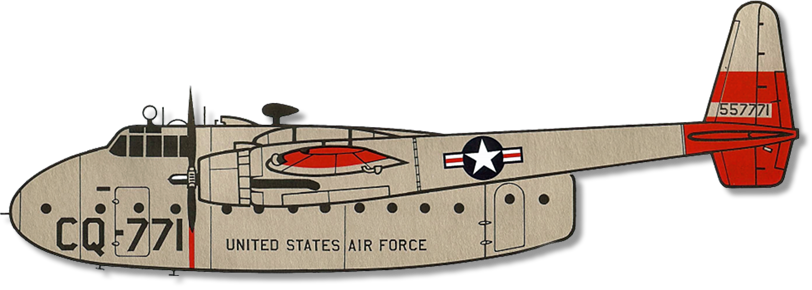
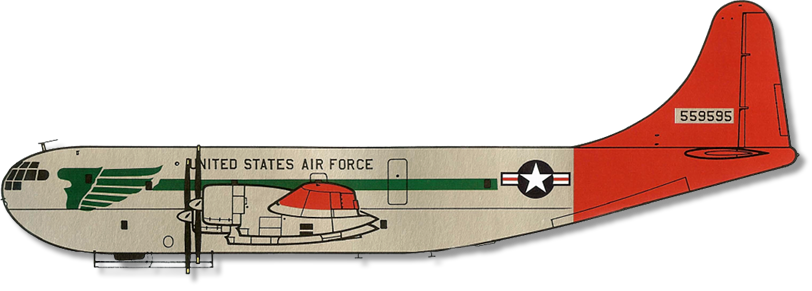
Boeing C-97 Stratofreighter
Although most commercial Stratocruisers had round windows, the C-97 used the more traditional rectangular windows of this era.
Payload 53,000 lb. • Speed 200 mph • Pratt & Whitney R·4360·27 Double Wasp (3,500 hp) x 4 • Max. Gross Take·off Weight 142,500 lb. • Range 1,500 st. miles • Span 141 feet • Length 110 feet • Height 33 feet
Payload 53,000 lb. • Speed 200 mph • Pratt & Whitney R·4360·27 Double Wasp (3,500 hp) x 4 • Max. Gross Take·off Weight 142,500 lb. • Range 1,500 st. miles • Span 141 feet • Length 110 feet • Height 33 feet
Harold Bamberg's Halifax Red Eagle
Payload 15,500 lb. • Speed 185 mph • Bristol Hercules 100 (1,650 hp) x 4 • Max. Gross Take-off Weight 68,000 lb. • Range 1,800 st. miles. • Span 104 feet • length 74 feet. • Height 22 feet

Handley Page Halifax/Halton

Halton Conversion - Strictly, the name Halton applied only to those Halifaxes that were converted to passenger airliners by B.O.A.C., which, in the immediate post-war years, was desperately in need of aircraft, and was limited in its dollar funds to buy American transports. The enterprising Freddie Laker, who established Aviation Traders as an aircraft engineering company at Southend, Essex, supplied Bond Air Services with its entire fleet of Halifax freighters.
Avro Tudor 5
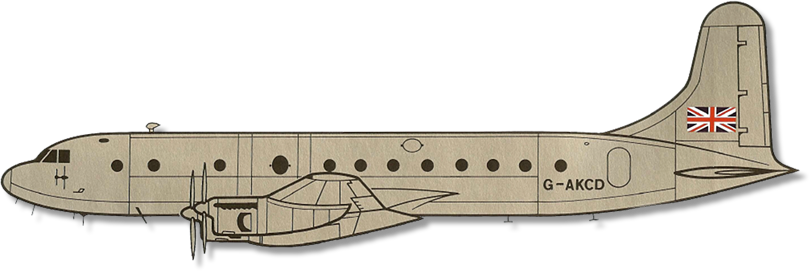
Although rather ungainly-looking onthe ground, the 'stretched' Tudor 5 had elegant lines for its time.
Payload 17,950 lbs • Speed 185 mph • Rolls-Royce Merlin 623 (1,760 hp) x 4 • Max. Gross Take-off Weight 80,000 lb.• Range 1,500 st. miles • Span 120 feet • Length 106 feet • Height 24 feet
Payload 17,950 lbs • Speed 185 mph • Rolls-Royce Merlin 623 (1,760 hp) x 4 • Max. Gross Take-off Weight 80,000 lb.• Range 1,500 st. miles • Span 120 feet • Length 106 feet • Height 24 feet
The Avro 685 York

Developed from the Lancaster bomber, this Merlin-powered transport was a good load-carrier. First introduced by the R.A.F. in 1942, 253 were built, and went into post-war commercial service with B.O.A.C., B.S.A.A., two British state airline corporations; and FAMA, in Argentina. It was the British backbone of the Royal Air Force Airlift, carrying 61% of the load and accounting for 42% of the total R.A.F. aircraft movements. During the Airlift, the British charter operator, Skyways, also operated Yorks.
Handley Page Hastings
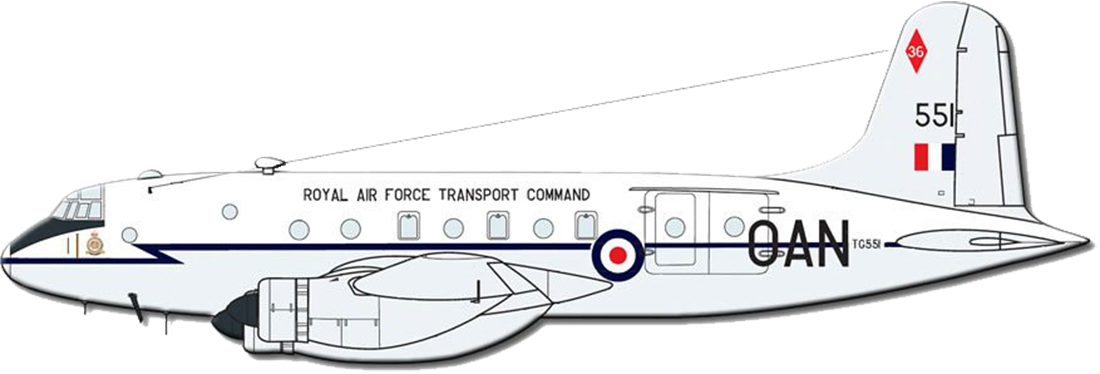
The Handley Page Hastings was introduced into RAF service in September 1948 and 26 of the type were immediately pressed into service on the Berlin Airlift.
Powered by four Bristol Hercules engines, it had a maximum speed of 354 mph and a payload of 18,500 lb. The Hastings was 81 ft. 8 in. (24.9m) long with a wingspan of 113 ft. (34.46 m).
Powered by four Bristol Hercules engines, it had a maximum speed of 354 mph and a payload of 18,500 lb. The Hastings was 81 ft. 8 in. (24.9m) long with a wingspan of 113 ft. (34.46 m).
Lancaster of Flight Refuelling Ltd.
Payload 18,600 lbs • Speed 185 mph • Rolls-Royce Merlin 85 (1,750 hp) x 4 • Max. Gross Take-off Weight 65,000 lbs • Range 1,000 st. miles • Span 102 feet • Length 77 feet • Height 20 feet

Payload 13,300 lb. • Speed 185 mph • Pratt & Whitney R·1830 Twin Wasp (1,200 hp) x 4 • Max. Gross Take-off Weight 60,000 lb.• Range 1,000 st. miles • Span 110 feet • Length 67 feet • Height 18 feet

(B-24) Liberator
Short Sunderland
Payload 9,800 lbs • Speed 165 mph • Pratt & Whitney R-1830-90B Twin Wasp (1,200 hp) x 4 • Max. Gross Take-off Weight 65,000 lbs • Range 1,000 st. miles • Span 113 feet • length 85 feet • Height 33 feet
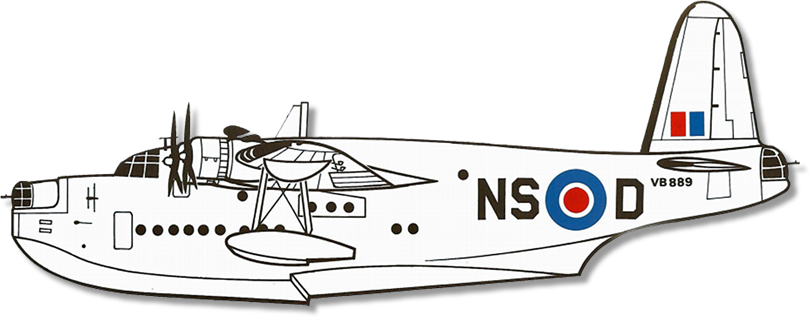
The Ubiquitous DC-3
Payload 7,480 lbs • Speed 150 mph. • Pratt & Whitney R.1830 Twin Wasp (l,200 hp) x 2 • Max. Gross Take-off Weight 31,000 lbs • Range 600 st. miles • Span 95 feet • Length 65 feet • Height 17 feet
Note: Standard commercial (civilian) max. Gross Take-off Weight was 26,000 lb., standard payload was 6,000 lbs
Note: Standard commercial (civilian) max. Gross Take-off Weight was 26,000 lb., standard payload was 6,000 lbs

Bristol 170 Freighter Mk. 21
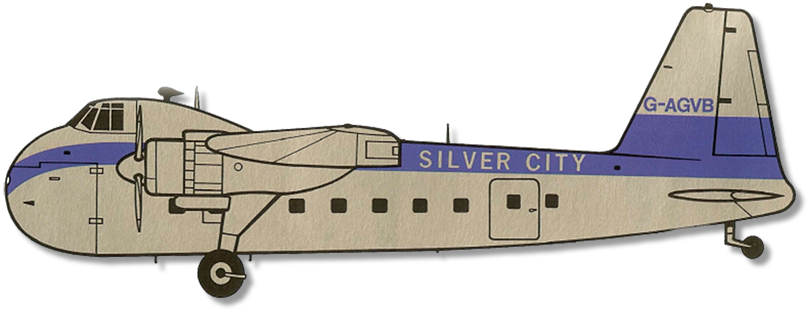
Payload 8,700 lbs • Bristol Hercules (1,700 hp) x 2 • Max. Gross Take-off Weight 40,000 lb • Span 108 feet • Length 68 feet
The Lighter Side

The operation also had its amusing side. On 21 October 1948, Clarence (a camel) along with 5,000 pounds of candy were flown into Berlin, to the cheers of more than 5,000 children. The baby camel was the mascot of the 525th Fighter Squadron, stationed at Neubiberg AB., Germany. Both the multi-coloured fuselage titles and the camel were hastily hand-painted. The term "Camel Caravan" was the name of a popular radio show, featuring the swing bands of the era, and sponsored by a well-known brand of cigarettes.
Aircraft of the Berlin Airlift - 24 June 1948 to 30 September 1949
This Newsletter is Dedicated
To the Memories of:
Raymond Cloutier (RCAF)
Air Cdre Gerry Pengelly (RAF)
Ian Wheatley (RAAF, WOD and SPLR)
Sqn Ldr Laurence (Gil) O'Toole (RAF)
To the Memories of:
Raymond Cloutier (RCAF)
Air Cdre Gerry Pengelly (RAF)
Ian Wheatley (RAAF, WOD and SPLR)
Sqn Ldr Laurence (Gil) O'Toole (RAF)
Tony Gale
ukmamsoba@gmail.com
ukmamsoba@gmail.com

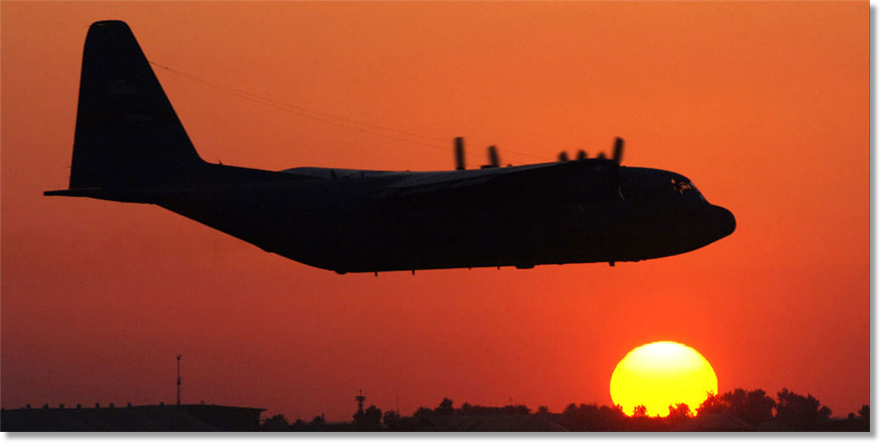
Hilton 22







